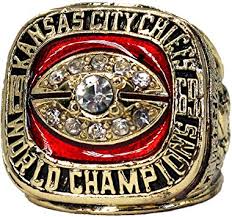
SIMPLE – FASTER – CAPABLE
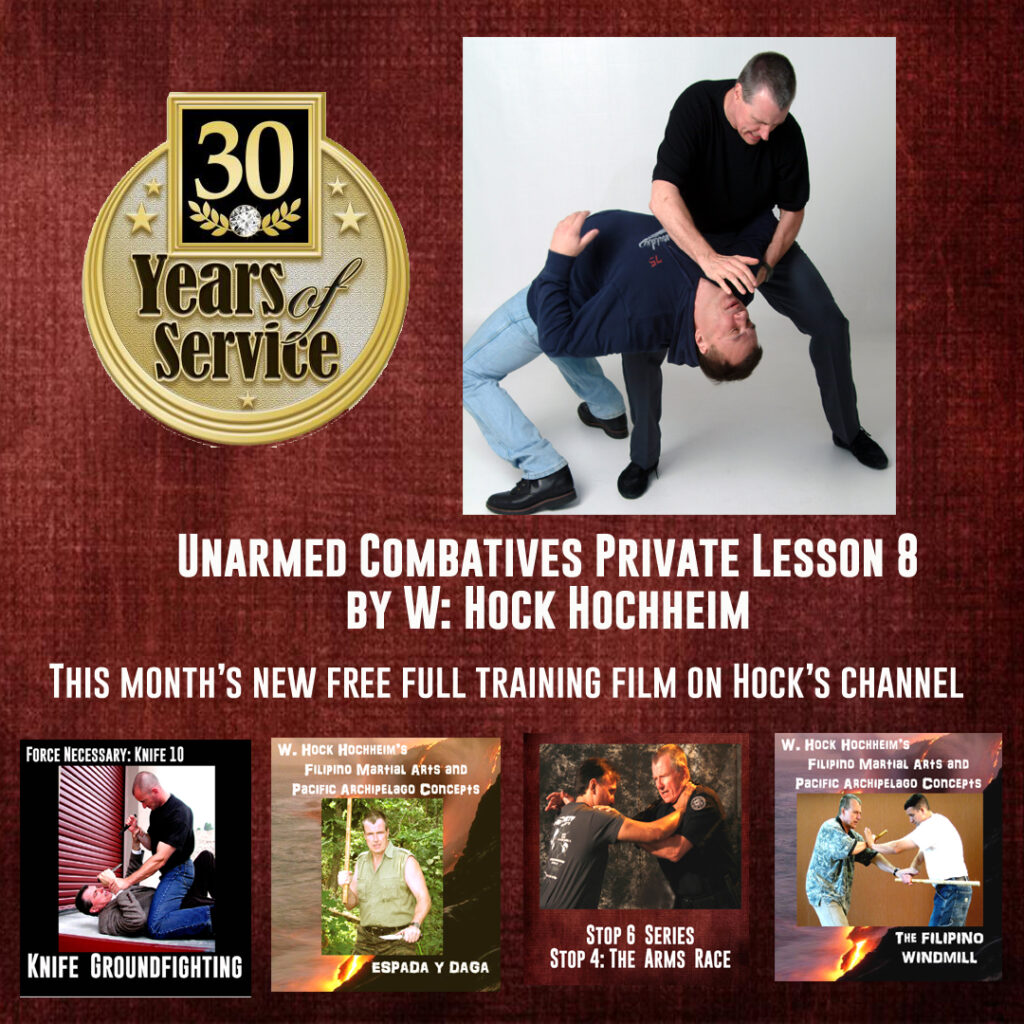

SIMPLE – FASTER – CAPABLE

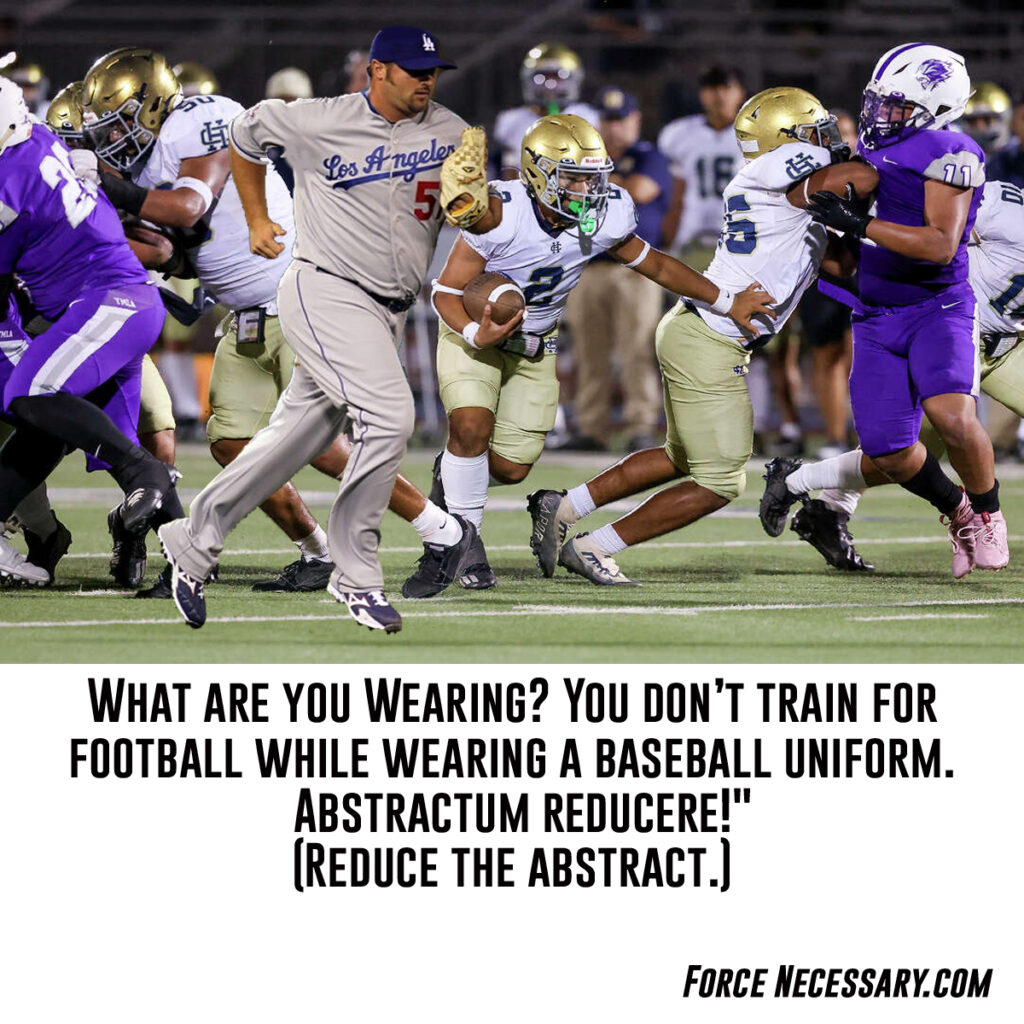
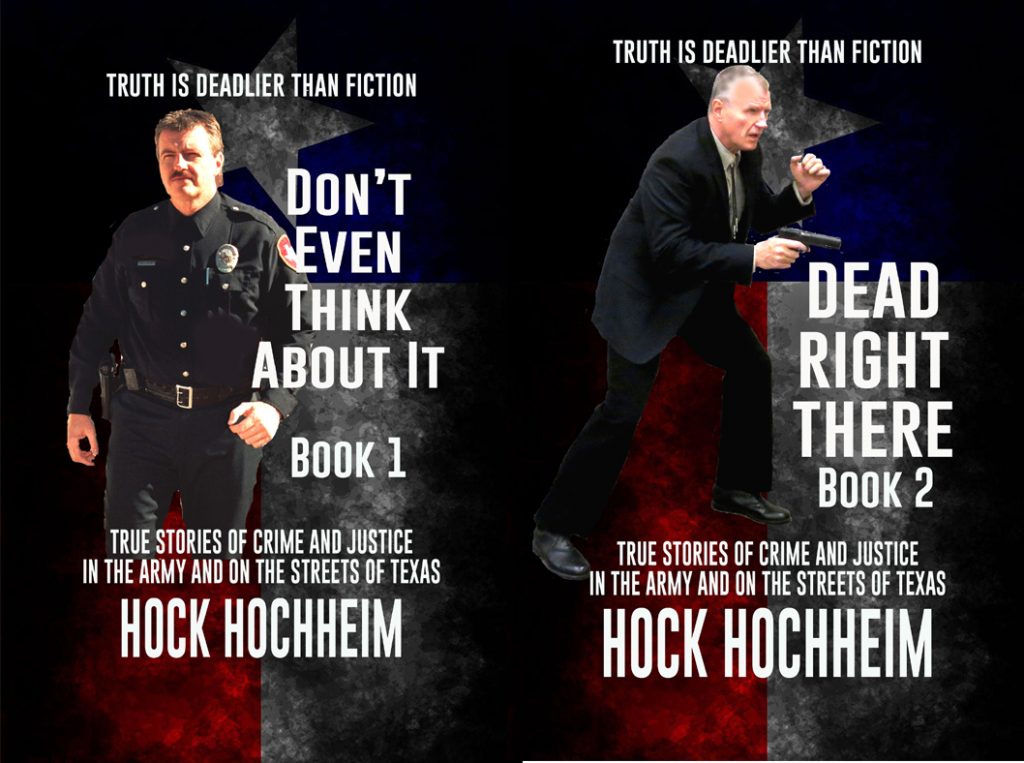
Can They Sue You? Can They Sue Each Other?
Assumption of Risk In Martial Arts Schools…
(The raw law on the “Assumption of Risk” has been a legal throwdown on many martial waivers. Is on mine. The standard is – “Assumption of risk is a legal doctrine that describes when someone chooses to participate in a risky activity and accepts the potential consequences. It’s a defense that can be used to reduce or bar a plaintiff’s ability to recover damages from a defendant. It’s a legal doctrine that describes when someone chooses to participate in a risky activity and accepts the potential consequences. It’s a defense that can be used to reduce or bar a plaintiff’s ability to recover damages from a defendant.” Of course, the legal system, ever prone to split hairs to the nth degree, shreds hairs into invisibility. -Hock)
Article by Attorney By Noah Nunberg
“Courts will apply the principle of “assumption of risk” in analyzing whether a persons involved in karate training are negligently liable in causing injury to others in supervising his students. This concept was well explained in the New York case of Beck v. Scimeca (Hwrang-Do Center), 90 N.Y.2d 471 (1997). The court explained that when a person engages in a sport or recreational activity, he consents to those commonly appreciated risks which are inherent in and arise out of the nature of the sport generally and flow from such participation.
For example, the court observed that one is legally deemed to accept responsibility to being hit by a ball in a baseball game or being bumped in a horse race. In each situation, the law will consider the degree of risks the plaintiff assumed when he elected to participate in the activity. The courts will not examine this in a vacuum. The assessment is made against the background of the skill and experience of the participant.
In Scimeca, a 30 year old orange belt student sued his instructor for compelling him to attempt a “jump roll” technique. There a 15 year old brown belt took over the class and directed the older orange belt, who had been training for 15 months, to jump over a high barrier. While the student had performed the technique before, the obstacle the student had to jump over was raised higher than he had previously attempted, and the student sustained severe spinal injuries in his failed attempt.
The court held that the student had assumed the risk of attempting such new techniques, which were calculated to advance his level of ability. The court examined whether the instructor created dangerous conditions which were over and above the usual dangers inherent in the martial arts class. The court also made clear that to assume the risk the participant must not only have knowledge of the injury causing activity, but also an appreciation of the risk involved. There, since the student had participated in this training technique before and he appreciated the inherent risks, there was no negligence.
The court distinguished other cases involving sparring activities, which appear to place a higher degree of responsibility upon the instructor. For example, in Deangelis v. Izzo, 192 A.D.2d 823 (3d Dep’t 1993), a beginning karate student sued the owner of the school as a result of sustaining a serious head injury while sparring with another beginner.
The court refused to dismiss the case based on assumption of risk there. The court noted that karate is not a commonly observed activity such as baseball or football and the dangers in karate are not at as apparent as they are with other common sports. Karate involves “specialized training” in order to make the punches, kicks and blocks effective. There, the new students had been trained in the punches and kicks, but not in blocking them.
Interestingly, the court observed correctly that placing beginners together to spar may be more dangerous than having the beginner spar with a more experienced opponent. The court found that since this fact in counterintuitive, it was not clear that the risks involved were “known, apparent or reasonably foreseeable . . . .” Therefore, the court refused to dismiss the action and held it for trial.”
Check out Hock’s TV chennel for many free one-hour training films. Click here
I first came to Texas from New York City on a motorcycle in 1972, ending a sort of “Then Came Bronson-Easy Rider” extended tour around the USA. One thing I did learn is that “I don’t need much stuff.” Comedian George Carlin did a comedy bit on this subject about people’s stuff, and making “smaller versions” of their stuff. As a result of such travel, I possess a concept, “Can I fit it on my chopper” mentality. This March 2025, I am moving in my new wife Sandy. This means clearing out my condo. All things big and small. I already gave away a lot of stuff after Jane died years ago. So now I will be moving very little. I look around my barren condo and still think, “Should I bother keeping this? Or that? Can I fit it on my chopper?” I am an unfrozen caveman. So for starters here, for my upcoming opinions, I am not a collector for collection sakes.
Who wouldn’t want to collect this nifty Johnny Cash knife thingy? Ahhh, me. I am not a knife or gun collector, no more than I would collect hammers, screwdrivers or wrenches. I just don’t care. You get the message – the “tool” message.
I guess this also comes from my Army and policing days. I am just interested in efficiency. Don’t misunderstand me, I like looking at your cool knives and guns – I will honestly admire them – I just don’t want them or need to own them. If you do collect these things, have a collectors’ mind, and you have the money and time for such a hobby, then if you are happy? I am happy.
The only time that my eyebrows are extra raised is when the lines between pretty and necessary-survival are blurred (and maybe bloody). One of these blurry problem areas is the texture of grips and handles. I always shake my head when I see collections of slick, baton-stick, knife handles and gun grip handles.
Speaking of bloody, Johnny Cash once wrote about the “kicking and the gouging and the mud and blood and the beer.” There’s also guts, water, oils, sweat, bad gloves and other substances that can make life very slippery and your hands and tools very slippery. Legend has it that the Gurkhas would dip their kukris in motor oil and then train with slimy, slippery grips. And what if your hands are injured and-or are freezing? Snake Blocker likes to stick practitioners hands into freezing water, then let them train with incapacitated hands, in his Apache Knife Course. You make things worse with pretty, shiny, slick handles.
I always shake my head when I see slick, metal knife handles and gun handles. A considerable amount of time, money and research has gone into making working tools like hammers, saws, screw drivers etc., very grip-able. But like wise tool-makers, many wise expandable baton, gun and knife makers and sellers have also researched and labored to make your weapons stay put in your hands with textured grips! People like to suggest that textured gloves solve some of these problem, but will you ALWAYS be wearing gloves? 24-7? Don’t take your gloves for granted in crime and war.
It’s bad enough when people have extra stupid hand-fingers on grips. Like this knucklehead for a major magazine using only 3 fingers on a handle to stab clothing, muscle mass and bone. This is mindless, leftover mimicry from some martial arts.
“I want my weapons to be tools and my tools to be weapons,” – Paul Howe
Deeeeep pockets! Some folks will suggest that a super-textured knife or pocket pistol handle might slow down weapon draws from pockets. Okay. Most knifes are clipped on pockets, but I guess some people do bury their knife in pockets. Small pocket pistols too? Okay. I guess you have to calculate the situational slick versus textured risks. There was a fad a few years back with car keys. The key itself was hidden inside a carrier and you pressed a button to eject the key, much like a switchblade operation. But if you hit the button while the device was in your pocket, the key shot out making the “draw” from your pocket cumbersome. I accidently did this several times with my car key and thought about this problem with some button release switchblades.
I am not endorsing anyone or anything here. I am just making a suggestion, forego pretty and slick, and get the most textured grips on your firearms, knives and sticks-batons. In my Force Necessary stick, knife and gun courses, in Level 1 of each, I emphasize and display the vital importance of grip-handle textures. (The issue of the SIZE of handles and grips is a whole other important essay.)
Can I fit it on my chopper? I don’t think cavemen used or bothered to collected fancy, slick weapons. And they probably used ALL their fingers when holding them. Get a damn handle on your handles!
“““`
Hock’s email is Hock@HocksCQC.com
Get Hock’s martial combatives books, click here.
One of the major influences in my martial life was Ray Medina. One of my best friends Roger White and brother cop (patrol and detectives), and Roger introduced me to Ray in 1986 because he knew my personal frustrations with classic martial arts, dating back to 1972.
Ray was already a karate-kickboxing champion fighter in our region but he’d discovered the Bruce Lee world, Dan Inosanto and Paul Vunak. Jeet June Do and Filipino martial arts, Thai, Shoot, Silat and that unique street fighting that Vunak pioneered in the 1980s. Ray was traveling back and forth to then the “Mecca” – Los Angeles for all this. And was addicted to seminars.
I “hired” Ray to teach me and basically several days a week for years we’d meet. At this point money was no object. Addiction is addiction. We’d meet up and I’d ask, “What are we doing today, Ray?” And it took a while to figure it out but basically we did what HE needed to work on, not me, which meant him beating me up quite a bit, under the guise of teaching me. BUT…I learned a lot. You can still learn a lot that way and of course I got to experiment on him too. I recall that Inosanto said that he did this with Bruce Lee, and Lee would wind up beating Dan up a lot. “Basically I was Bruce’s punching bag,” Inosanto said once.
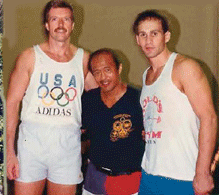
Ray and I started hosting the big names in our city. I began attending seminars with him and I quickly learned that we were both interested in visiting systems and arts, but only to learn how to beat them. We were like spies in ememy camps. Many if not most seminar (and class) attendees attend to learn those arts, embrace them, get rank, to eventually teach them. Early on I learned that our spy motive was to learn how to beat what every one else was doing, not replicate it, join it, or worship it.
True, we were both card-carrying martial addicts, but for Ray he was spying because of the fighter in him. For me, I was spying because I had to arrest people. So, we would study material with the sole purpose of beating it. Inadvertantly, we did learn other systems and arts but sort of, from this ass-backwards, spy way.
Ray eventually died of a stomach cancer. Through the years he knocked me out several times when kickboxing, but he also knocked some sense into me which was worth more that those occasional, nausea-LSD-like, TKO dreams and the occasional vomiting.
Check out all of Hock’s free training films on his TV channel, click here

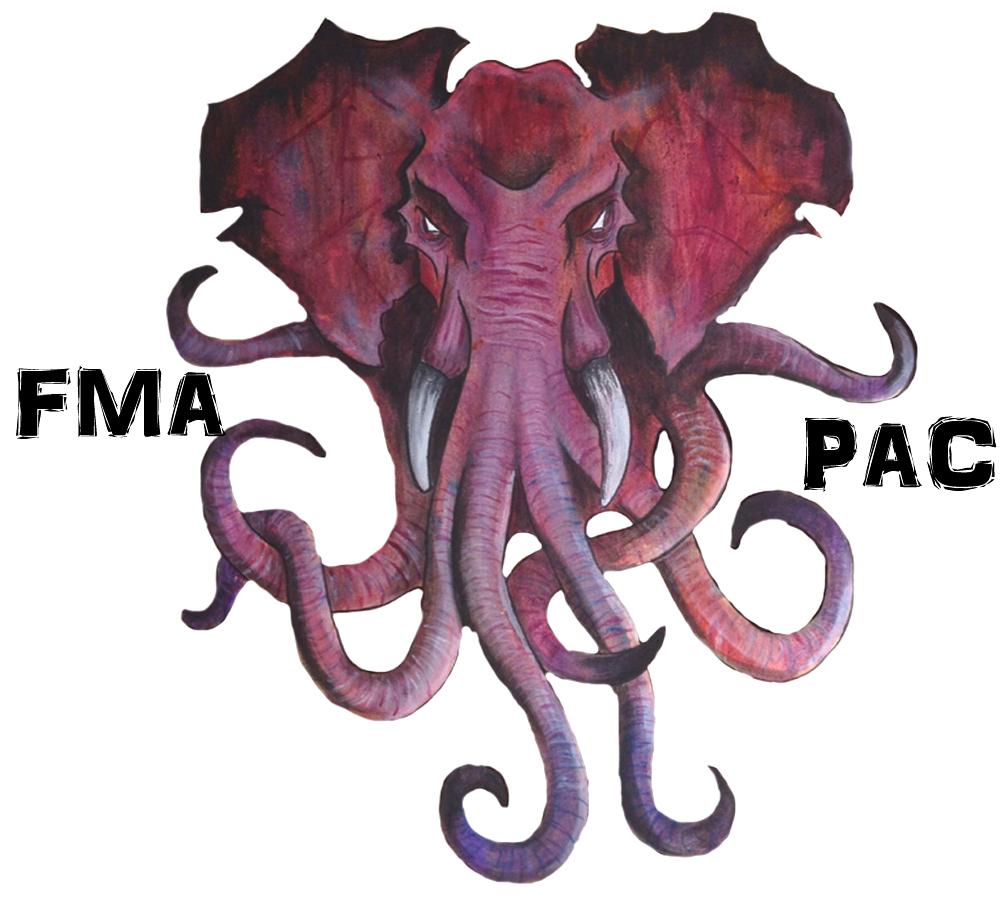

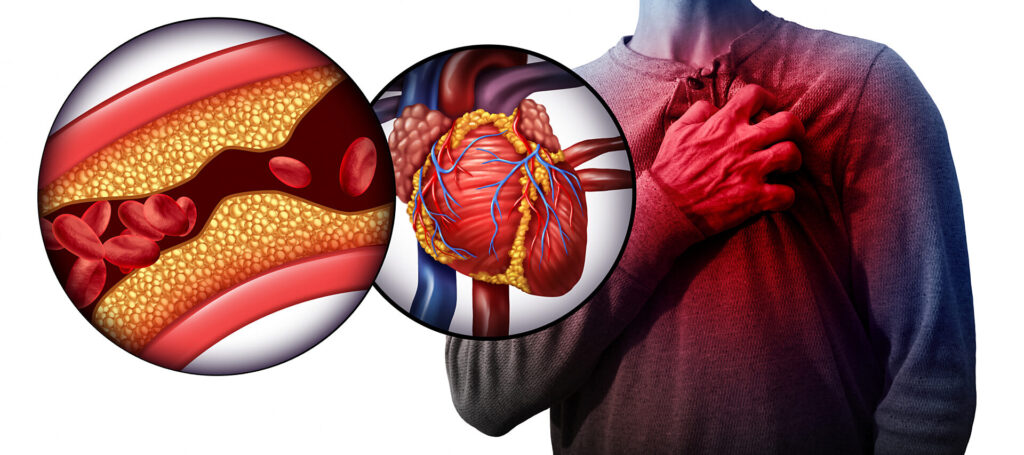
According to the American Heart Association, naturally lowering the temperature in this way decreases your risk of experiencing brain damage. It stops chemical reactions that can damage your organs when full oxygen flow resumes. Lowering your body temperature also helps regulate your heart rate and encourages steady breathing.
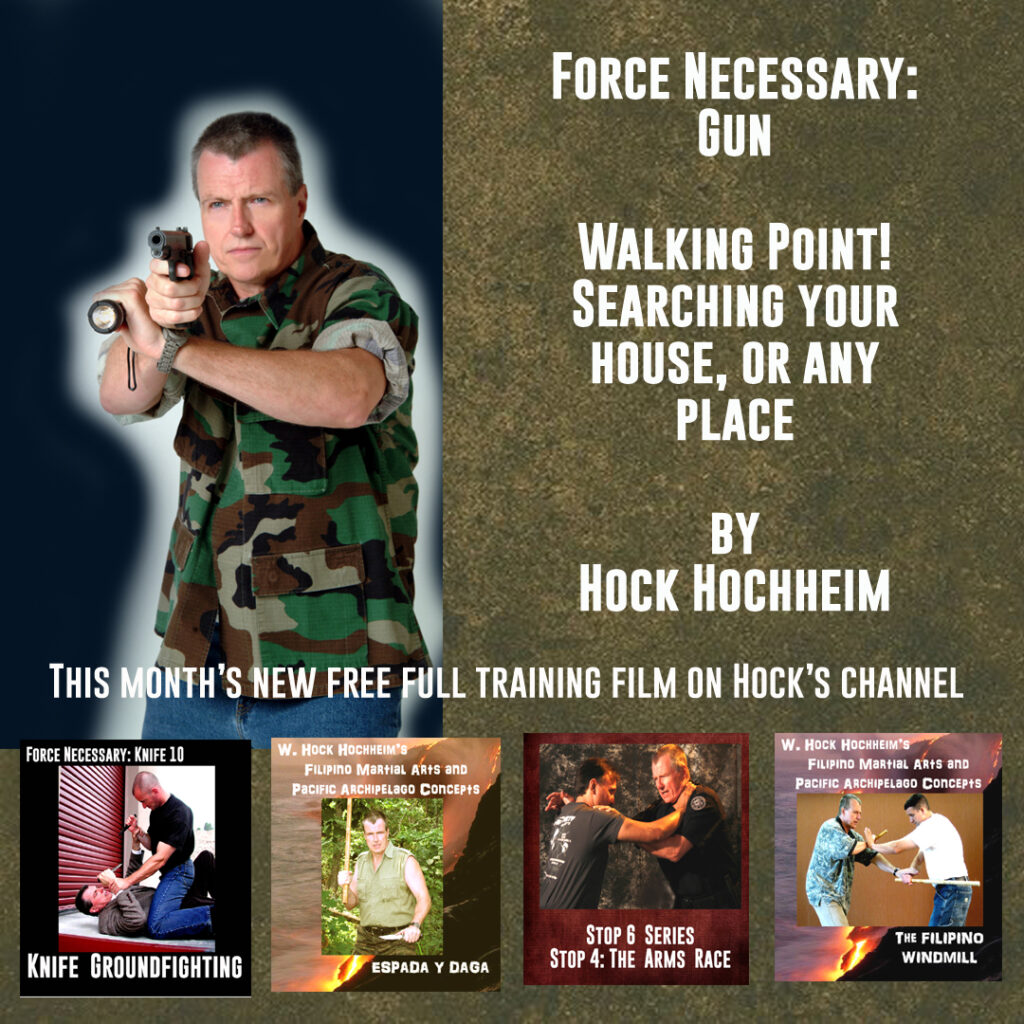
Since I organize the ‘Merica series seminars every March in the Royal Range in Nashville, which only covers “western” martial arts and systems, the topic comes up – “Okay Hock, how do you define that.” Which is what? And this question, answer and inspection has nothing to do with good or bad, better or best. Nothing. It’s just organizing.
I am not an outsider in this endeavor. Since 1972, I have spent years obsessing in karates-aiki jujitsu, Arnis, Jeet Kune Do, the multiple, Inosanto family systems, all to perhaps a distracting, unhealthy burden to normal life. I have more than poured over the words of Bruce Lee and Ed Parker. I know martial fads, addictions and histories. I have run my own Inosanto-like school in north Texas for years, battling the martial business world. I have traveled and taught seminars all over the world now for 30 years now, and I work with schools all over the world. Least of which I should add, all the non-stop, military and police training along the way (always geared for clean, generics and success, which I prefer.)
The simple, best fighting systems around the world are somewhat shared and then not shared at all – as methods can be obtained-evolved organically without the knowledge of each other. So, you’ll have someone in Japan doing the same thing as someone in Ireland because that something is just smart and good. Evolved in isolation. Devoid of shared culture. Distance counts.
You have to dig deeper to think western-eastern, to think of things geographically. One big filter I use for the ‘Merica seminars is hemispheres. In other words, Karate, Tae Kwon Do, Jujitsu, Muay Thai, Judo, Kung Fu, Silat, Israeli Krav Maga, Russian Systema, Filipino Arnis, and so forth did not, are not, do not originate in the western hemisphere. And in fact, they proudly market that very geography, flying the flags of foreign countries to help attract the “grass is always greener,” exotic advertising customers.
And just the perpetuation of eastern hemisphere martial arts migrating to the west, taught via eastern dogma-doctrine, replicating via eastern ways, does not make for a western martial art. If John Smith teaches Okinawan Karate in Omaha, Nebraska, that is not a western hemisphere martial art or system.
So the word – ‘Originate” comes into play. What originated where? In the western hemisphere? Shared or not shared? If shared, then how much of what? Some original, western hemisphere systems are combatives, or like Irish stick fighting, catch wrestling, Apache, Savate, HEMA sword and axe fighting, a way of boxing, a way of kick boxing. If you think about it, Bruce Lee even developed a healthy mix of Jeet Kune Do (JKD) on the west coast of the United States. He preached against isolated systems. Bruce mixed…
Speaking of Mixed Martial Arts (MMA) arts-systems purposely mixed by leaders, it has many decades of old history in the USA. Take for example Dan Inosantos’ approach. Been around “forever” and born in California and usually called mixed martial arts. But if you think about it, his approach is always singular, split, unblended, separate studies of each system. It was never really mixed-mixed and evolved (except for the JKD part). Each of the arts are taught separately as in their respected, doctrines-dogmas, even at times with their uniforms. His definition of MMA is diverse in systems, but not blended-mixed. It is much like John Smith teaching Okinawan Karate in Omaha, Nebraska. But in Dan’s case it is like several, separate systems from elsewhere, respected and keep alive. Despite the influence of Bruce Lee, the systems are not blended.
As an example of a blend-mix, Hawaii is actually located in the Western Hemisphere, as it lies to the west of the Prime Meridian, and Kajukenbo is a 4-art, very-blended-very mixed together, martial art. Way more blended than Hawaii’s Parker Kenpo.
A tricky one to categorize is Brazilian Jujitsu. “Originated” in the western hemisphere? Yes. It’s Brazil for heaven’s sake! But is it like John Smith in Omaha teaching classic karate? Many people joke that BJJ, really stands for “Basically Just Judo.” Now we all know BJJ is off the charts in their chess-like development over “basically just Judo,” with endless inventions and counters to the inventions. Chess, not checkers. But they dress, talk, eat, sleep and franchise like a martial art and we know their oriental roots. And so, I cannot invite BJJ into an ‘Merica seminar presentation. I am quite sure they don’t care one bit, and in most cities you can throw a rock and within that toss hit some sort of BJJ school. The fad-growth-addiction, not unlike Krav, has been incredible.
So far, I have used the ideas and words of “culture,” “origination,” blend,” “unblended,” “clothing,” “geographic,” “doctrine,” “dogma,” “hemispheres.” These are what I examine when I organize these ‘Merica seminars. It’s got nothing to do with good, bad, better, best. It’s just a theme, folks. I don’t care what you study as long as you know the big picture. If you’re happy? I’m happy for you.
Oh and hey! Godspeed for 2025.
****
Hock’s email is Hock@hockscqc.com
Check out tens of full hour, free training films on Hock’s Combatives TV channel… https://www.youtube.com/@hockscombativeschannel407/videos


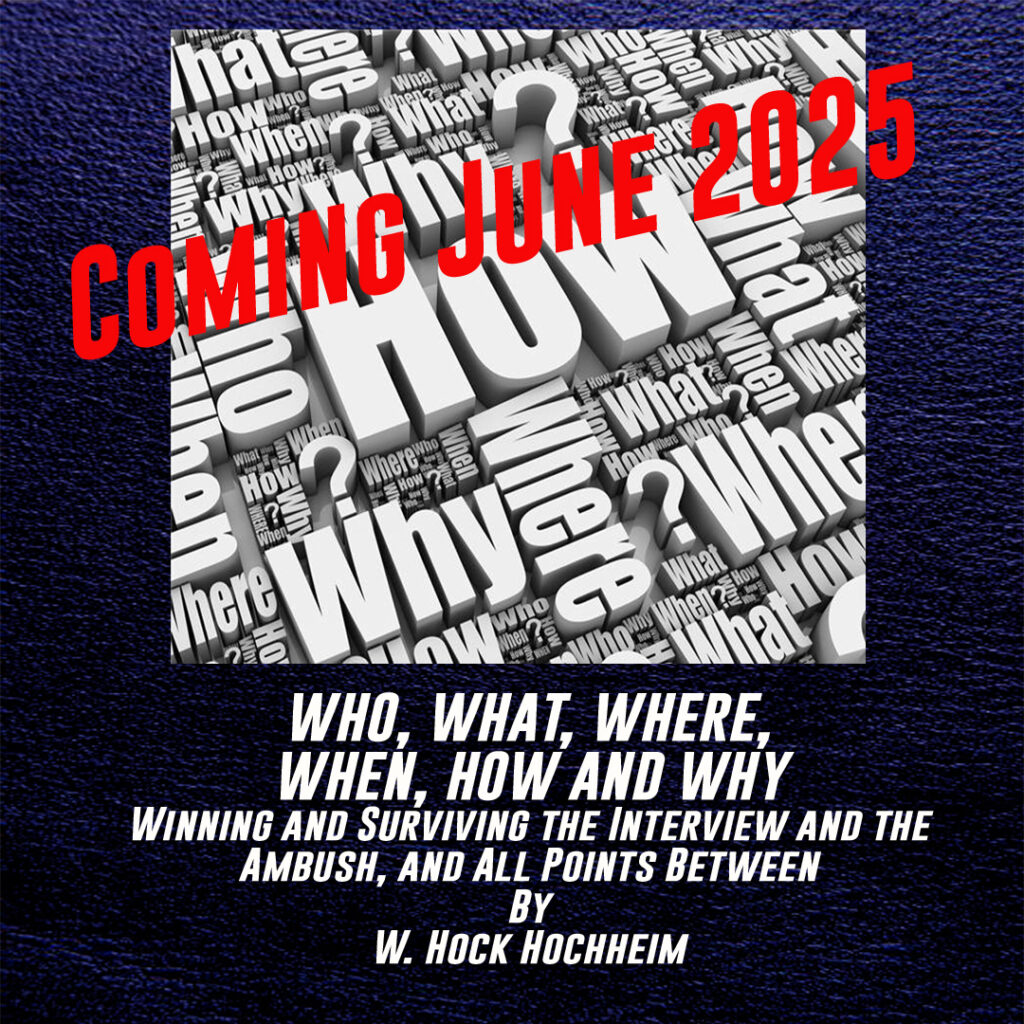
(In my upcoming book, as a result of the popularity of my Who, What, Where, When, How and Why lectures, this book will be published in mid-2025. In the Who segment I explore so many who topics. This is one – who do you REALLY think you will be fighting?- Hock)
WHO Question 2: WHO do you really think you will be fighting?
We’ve asked “who are you” in question one, and now with the duality mandate we must ask – who do you really think you will be fighting, given your geography, lifestyle, the times, crime and war trends? The quick answer in crime is usually someone you somehow know. But, not always! you must consistently read about and watch the news for crime trends and antisocial behaviors to pursue the idea of who you might be actually fighting, “friend” or foe? Usually none of this is covered in your local martial arts school or seminars, because they are busy being-doing their martial arts thing. They fight each other, virtually mirror images of themselves, other matching sports and arts people. In many cases there’s even film on how their competitors fight.
Some training programs foolishly treat every challenge as if the threat were a Nazi commando, plucking their eyeballs out, gutting their guts out, knocking them down and out and squashing their throat and face with multiple boot stomps. Unless you are in a war, this is excessive in so many situations, and you may well wind up in jail. Every hand, stick, knife and gun fight is a highly situational, drama and trauma, with consequences.
So, who do we fight? We list two general groups.
Enemies within 1: Friends and relatives, the “Drunk Uncle Conundrum:” A lot of family and friend violence goes unreported, but a lot is reported. It is very common in life to fight people that you know. Often you don’t wish to really hurt your drunk buddy or uncle-relative. This self-control is hard. I know because in police work we are also expected to “fight” but not really hurt people unless things get really “out-of-hand” and elongated and the situation really escalates in a mess.
I started out in Ed Parker’s Kenpo Karate in the early 1970s and Parker warned that when you have to fight a friend or relative, and you control yourself so as not to really hurt them, the fight lasts much longer. So true also in police work also. That’s a tough call, this control thing. But know this, poke your buddy’s eye out, bite off his ear, hammer-fist your uncle’s windpipe, smash his face, shatter your father-in-law’s knee, and then see what happens to you. Usually, often, that happening is you end up in jail and/or battling lawsuits. Money and problems, even if justified at first. Then there’s the revenge factor later, also covered here in a later segment of my book.
Remember technically, when a friend or relative… or someone… anyone…attacks you, an official crime begins and technically they (or you?) become…a category criminal. Then you could also just lump your aggravated uncle or spouse into the crime category should he take a poke at you, etc. The Drunk Uncle Conundrum is – do you report the crime? Does he? Or do you both just put ice on the bruise and go home? The family-and-friend situational nuisances dictate the temperature of your response. This is why a lot of family-and-friend violence goes unreported, unless there serious bodily damage? Call for an ambulance? Then usually the police get involved. Crime report or no crime report, you may well be fighting a friend or a relative over…who knows what!
Someone you know as elevated to criminal status. Angry friends. Angry relatives. Angry co-workers, business partners, Angry spouses. Sex and money problems. People that know people in these shapes, forms, or fashions and problems may percolate…
Speaking of knowing each other, there is a lot of domestic violence out there. The Department of Justice reports some annual generalities: “about 29% of women and 10% of men in the US
have experienced rape, physical violence, or stalking by a partner, which has adversely impacted their daily functioning. Nearly 15% of US women (14.8%), and 4% of men, have suffered injury due to intimate partner violence,
including rape, physical violence, and/or stalking.”
Annual global estimates from the United Nations Office on Drugs and Crime reports on total female intimate partner/family-related homicides: “Women and girls in all regions are affected by
killings. While Asia is the region with the largest absolute number of killings by far, Africa is the region with the highest level of violence relative to the size of its female population. The Americas (all of the western hemisphere) is next, followed by Europe and Oceania.”
Prison Legal News reports the headline: “Most murders committed by friends and family.” Psychology Today reports, “Therefore, the statistics appear to indicate that ‘the streets’ are likely far safer places for women and girls than their domestic environments.”
Study after study, year after year finds this all true. I consider working homicides as the “World Series of Police Work.” I have worked murders for many years and usually the common murder is frequently solvable because it takes some sort of friend, business, relative, money, sex, serious motive-anger to kill a person. This motive can usually be researched and uncovered. The great work of EMTs and emergency room crews can save a life, thwart a murder, turning the crime into an attempted murder or aggravated assault. The victim is alive to tell the tale. And importantly, we cannot view the problem of violence by just examining murders and attempted murders alone. Physical conflict is far more complicated and traverses all levels of crime.
Enemies within 2a: Criminals: Stranger on stranger. Someone you don’t know. Stranger-on-stranger crime is another kind of beast to solve. I’ve learned in many “Assault and Violent Death” schools I’ve attended, that stranger crime can be very scary. The USA Office of Justice reports: “Stranger-on-stranger crime is often considered more frightening than non-stranger crime because it creates a perception of randomness and lack of control, as the victim has no prior relationship with the perpetrator, making it seem like anyone could be a potential target at any time, regardless of their actions or precautions;
this fear is amplified by the unknown nature of the assailant and the inability to predict or prevent such an attack.”
As an investigator, stranger on stranger crime opens up a whole second set of motives that must be pursued.
Enemies Within 2b: Enemy soldiers: They are essentially strangers, but we kind of know who those people are. Generally. We know the “likes” of the enemy anyway, but they are literally individual strangers to us. We meet them years later after the war and we become fast friends. Oh, the irony.
But, temporary enemies are often just that – temporary enemies. In war, since the history of man, we usually choose to kill them from as far away as possible, impersonal, but we often can’t keep that distance and things get face-to-face, facial expression-to-facial expression, blood spatter, up-close and personal.
Fighting is situational. Civil law, criminal law and even the Geneva Convention, as well as human morality-ethics, all look at fighting these two groups differently. Our responses in every fight, every battle are very situational. But, this is who…we…fight.
*********
Hock’s email is Hock@HocksCQC.com
My book will cover many Q and A topics within the who, what, where, when, how and why of it all. Coming in mid-2025…
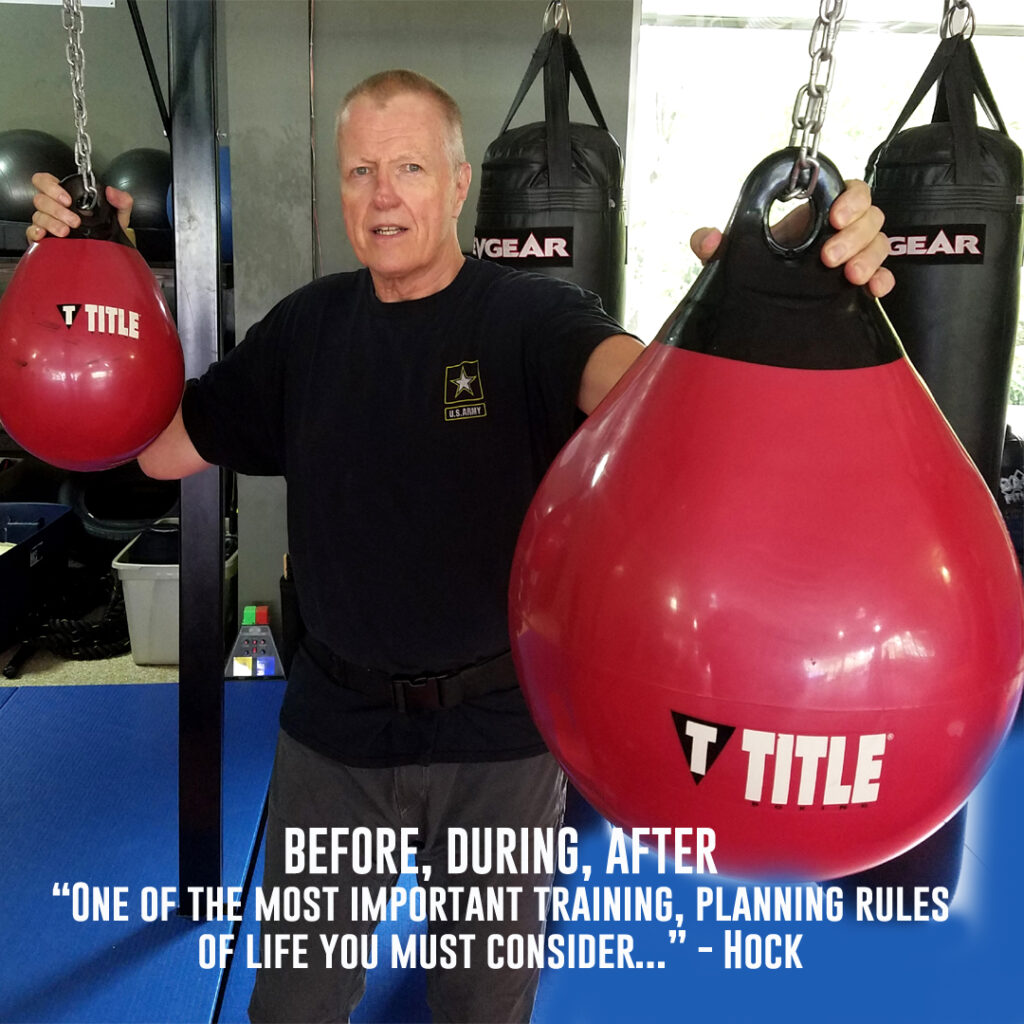
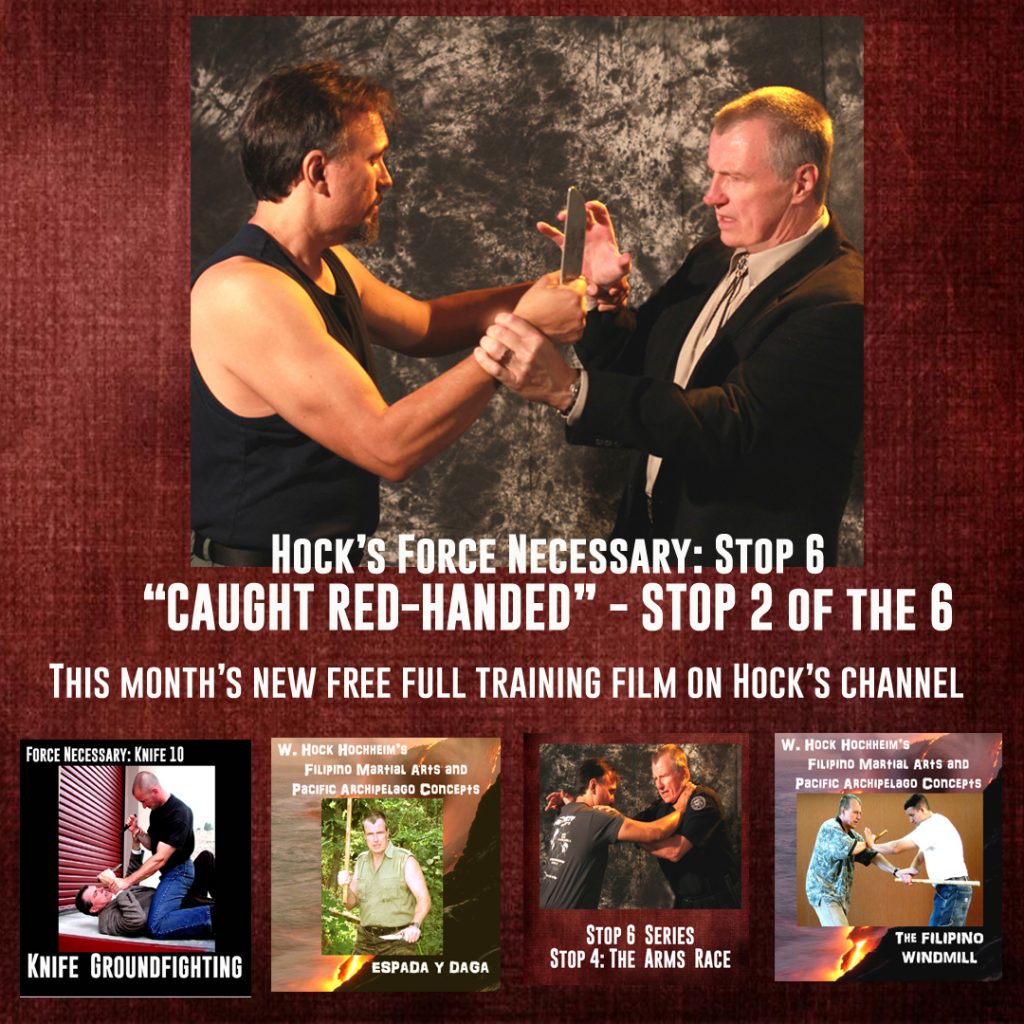
(The elephant head in the photo is not real. I would never shoot an elephant nor would I advocate such a thing. That is not a tattoo on my arm, but the arm of one of our practitioners. Another one has the tattoo on his calf.)
I have used the elephant as a logo-symbol so to speak for 30 years, for the reasons I list here. You always read on the interwebs about people claiming “people have asked me…” For most “experts,” no they haven’t. That line is just an excuse to pontificate on a topic, pretending to be a sought after expert. But in this case, actually, honestly a few folks will always ask, “Hock, why an elephant?” after seeing it for 30 years on my shirts, certificates, patches and later on my webpages.
First off the elephant has a insider, tribal meaning. Veteran insiders in the military, police and hunting worlds have long used the expression when talking about experienced operators. Also “experiencing” elephants have been used in religions and philosophies.
”Work with him! He’s seen the elephant,”
or…
“Train with him, he’s seen the elephant.”
or…
“Hunt with THAT elephant hunter. He has seen (and shot) the elephant. He knows where the elephant is. He knows the elephant.”
or…
“The elephant never forgets.”
Professor Google says about seeing, or seen the elephant…”In 19th-century America, (some say the 1830s) “seeing the elephant” referred to the experience of witnessing something extraordinary or momentous. It was a metaphor for gaining a new perspective or experiencing something that was previously unknown.:
Leave it to Americas to lay claim to the expression. We have long heard, centuries in fact, that traveling hunters in Africa, seeking to shoot elephants, were told to find veteran hunters who had “seen the elephant.” They know them, where they are, what they do and can lead the hunt.
It is true that term that has been used in North America for cross-country wagon train survivors, and for 1860s American Civil War survivors. In fact through time, you hear the terms with war survivors of many conflicts in general.
But the 1830s? What about the classic tale from India of blind men touching the elephant. The Indian parable of The Blind Men and the Elephant dates back to around 500 B.C., appearing in the Buddhist text Tittha Sutta. The story has been adapted in many forms and is part of many religious traditions, including Hindu, Jain, and Buddhist texts. Perhaps the idea of the 1830s origin comes from the American poet John Godfrey Saxe (1816-1887) who re-told and popularized the story in his poem, The Blind Men and the Elephant. It basically goes like this…
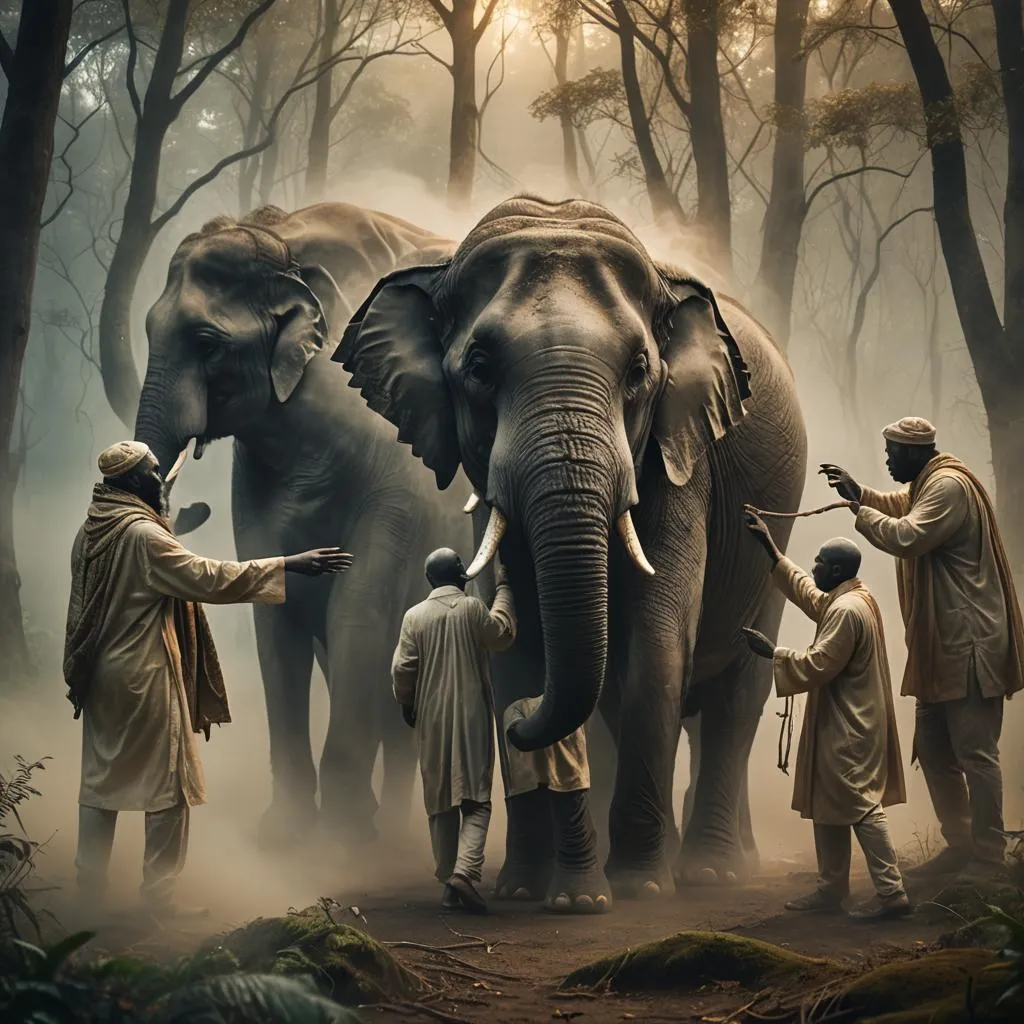
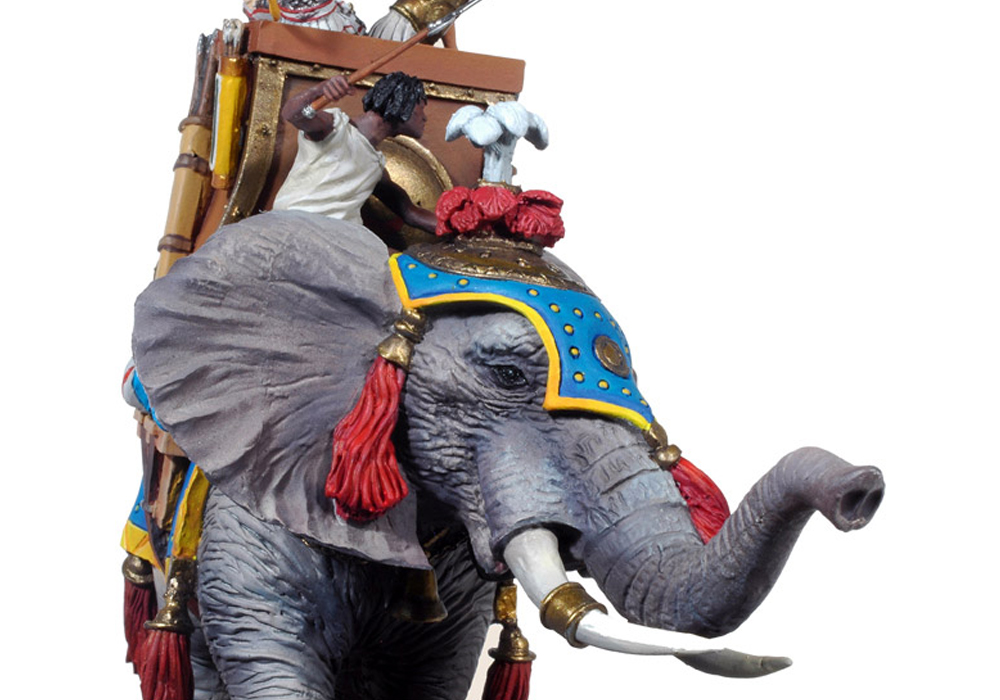
“If you want to be a forecaster, you would do well to base your forecasts on the actual experiences of real people whose been in situations you are only imagining, and the more informative their experience will be, of course “ – David Gilbert, Professor of Psychology, Harvard University author and lecturer.
Forecasting. Trainers forecast problems and work to solve them. The elephant symbol and expression has come to represent real action and real experience. If you can’t live it, then train with the people who have….kind of thing. get close, closer. The training mission is to collect this type of information, dissect, rationalize and create solutions .
And…that is why I selected the elephant as the Close Quarter Concepts emblem. We try to be a repository for as much of this type of information as possible. I am a vet, our books have true stories from all kinds of vets, these Force Necessary web pages do, etc. It is a never-ending, and ever-changing process, like education, of course. Skills are perishable, BUT, the best “elephant never forgets!” (oh, they do, but the origin of the phrase goes back to observations that elephants follow the same paths and even hand down genetic memories of directions and places-grounds across generations.)
And now I leave you with The Indian parable of The Blind Men and the Elephant
I.
It was six men of Indostan
To learning much inclined,
Who went to see the Elephant
(Though all of them were blind),
That each by observation
Might satisfy his mind.
II.
The First approached the Elephant,
And happening to fall
Against his broad and sturdy side,
At once began to bawl:
“God bless me! — but the Elephant
Is very like a wall!”
III.
The Second, feeling of the tusk,
Cried: “Ho! — what have we here
So very round and smooth and sharp?
To me ‘t is mighty clear
This wonder of an Elephant
Is very like a spear!”
IV.
The Third approached the animal,
And happening to take
The squirming trunk within his hands,
Thus boldly up and spake:
“I see,” quoth he, “the Elephant
Is very like a snake!”
V.
The Fourth reached out his eager hand,
And felt about the knee.
“What most this wondrous beast is like
Is mighty plain,” quoth he;
“‘T is clear enough the Elephant
Is very like a tree!”
VI.
The Fifth, who chanced to touch the ear,
Said: “E’en the blindest man
Can tell what this resembles most;
Deny the fact who can,
This marvel of an Elephant
Is very like a fan!”
VII.
The Sixth no sooner had begun
About the beast to grope,
Than, seizing on the swinging tail
That fell within his scope,
“I see,” quoth he, “the Elephant
Is very like a rope!”
VIII.
And so these men of Indostan
Disputed loud and long,
Each in his own opinion
Exceeding stiff and strong,
Though each was partly in the right,
And all were in the wrong.
MORAL.
So, oft in theologic wars
The disputants, I ween,
Rail on in utter ignorance
Of what each other mean,
And prate about an Elephant
Not one of them has seen!
Reach Hock at Hock@HocksCQC.com
Get Hock’s Texas Detective Trilogy, the cases of Jumpin’ Jack Kellog, click here.
Question: How do I become a Scientific Fighting Congress (SFC) instructor? Or obtain rank? How does this training work? What are the courses within the SFC?
The SFC is the corporate name above of all this. The year 2025 is the 30th year of our international operation. We have thousands of members in many countries as far as Australia. Under that corporate SFC umbrella are the 7 big programs or courses. All rank is optional. Yoy can just train for knowledge. There is no monthly tithing, franchise fees. First pick a course or courses you are interested in…
My typical seminars are about 12 to 14 hours over a weekend. I only plan on teaching certain themes for about 6 to 8 of these hours. The other hours I select material needed by the attendees. Some camps are geared specifically for rank advancement and those are the best places to go to for advancement. Most seminars are just about various subject matters. Also, of course, your regional instructor, or your favorite non-regional instructor can promote you too, in his or her regular classes, semi-privates or privates.
The Optional Instructor Titles…
Question: Must Instructors Teach Only Force Necessary Material?
NO! Of course not. You are free to do as you wish. Some SFC instructors..
Question: Is there expensive, re-certification or instructor re-certification?
No. It’s free and automatic when you simply attend another annual seminar. If you don’t attend, after a while, unless there are common-sense, extenuating circumstances, you sort of drop-drift off the active rolls and off the webpage active list. I don’t want to bother people with monthly or annual fees. You need your own money!
I do need to see ranking practitioners and instructors about once a year when common-sense-possible, because a common seminar will have a new theme, new materials and new evolutions. We never stop processing and progressing material. So, about once a year you need to swing by and see me if you can. I try to get close to you. No doubt I will travel more than my share to get within striking distance of you.
Re-certification? Ahain, we need to see rank holders and instructors about once every year. Or some reason why we can’t. (I am very flexible.) People listed on our instructor pages on our website, are active certified instructors. There are people not on the list that have attained various ranks to include Black Belt levels ranks in the last 30 years, but for whatever private or professional reasons, they are not recently active within our organization. Maybe they took up golf!? Have kids? Etc. They still possess these rankings, they are just not listed here on the active-duty pages. We are constantly improving and honing the material, as well as checking on the instructors and their progress. If he doesn’t see them for a long period? They simply fall off the active-duty list. Want back on the active list? Just Attend a seminar.
Question: Can instructors promote their people? Yes.
Question: How do SFC Tests Work?
We have been using the “College Approach.” Simply put? You do not have to take our modules in order. You can complete course levels out of order. I am already scheduling seminars for 2025, my 30th year on the road. In some circumstances, I may only return to a city around the world in a year and a half now, not every year. Worse, complicating the mission, I really am consistently asked for rank progressions and instructorships. Squeezing all this in, IN PROMOTIONAL ORDER for each person, is just about impossible to schedule.
Every single thing I teach is within a course we have. Though there are ten levels in each course, the tenth is a big test, so there are 9 levels of study in each course. That’s nine times four. 36 levels. 36 modules. Granted the modules are short and simple, but they take time to do, to teach and get to. Getting to them all, for everyone gets harder and harder each year. In a perfect world, like the perfect college schedule, you would start with “Subject 101” and proceed in perfect order, on through the “Subject 400s.” Ever done that? Who do you know that has? It is next to impossible.
When folks go to college, they do the best they can, getting the courses they need. But when registering, they take the subjects and classes that are open to them at the time, wrestling with both their schedules and the college-scheduled offerings. This means a college student may actually start in class “Subject 105,” rather than “Subject 101” because the 101 class is full. (I actually took all my college senior level business courses first!. Yes! As a night student no one seemed to care. So I took “401, 402- on up.” Took the others later as I could get them.) So, you can achieve out of order.
Complete any three levels? You can become an instructor. Instructors can teach ANY SFC level material, but only promote people in the levels they tested for. Any six levels? Any nine levels? And so on. Another simple way to put this, if on any given Sunday I teach Knife 6 and you complete it successfully? You can get official credit for Knife 6, even though you haven’t finished knife 5. We’ll all catch up with everything you in the end. (Note: The Citizen’s Self Defense League is the first three levels of the FN: Hand course.)
This college approach will facilitate more people to achieve what they deserve this way, given our constricted opportunities.
Some arts and programs have prerequisites. Seen this before? “Must Take Class 301 Before Class 302.” Fortunately, in my practical/tactical course modules, these subjects are not brain surgery or rocket science, nor do they contain difficult katas. They are simply basic, simple things spaced out over time, because not all things can fit in level 1 or “101.” Plus, we expect people will already be working with their local instructors, have the training videos, and also have experience (most folks I see, have experience) in a variety of systems and schools.
So now, simply put? You do not have to take or test for our modules in strict order. You don’t ever have to take a test. You can just train for knowledge. Nice if you would? Best if you would. But like college, you can complete course levels out of order.
I believe my house was once under attack from home invaders, thwarted by me and my gun. Here’s what happened, plus a few things you should look out for to protect yourself from this very nasty crime.
First let’s get some nomenclature straight that usually irritates we police folks just a bit. Naïve people confuse nouns like burglary, robbery, strong arm robbery, armed robbery and home invasion.
I cannot count all the burglaries I have been assigned to in the military police and in Texas police for 26 years, most that time as an investigator. And while I did not, could not solve all of the burglaries, I have worked some home invasions, and I have solved every one of those, including ones involving murders. Each a story for another time and a few appear in my Dead Right There, detective memoirs book (see below).
My incident. When retired, I had a bout with a “head cancer.” It was all successfully removed under the knife. In my recovery at home my head was stitched and bandaged, swollen, and I was drugged and weak while recovering. At the time, in our North Texas county, the news was reporting a series of home invasions. Innocent looking people, usually girls-women, were knocking on doors at night, making up excuses that they needed help and when a resident let them in, suddenly hidden, young men appeared too, secreted beside the door and away from door peepholes, or around the corner of the entry ways. The men would just barge in. Serious criminal chaos would ensue.
Well, when home recuperating from this surgery, in a robe and pajamas, one very cold, winter evening (about 8 p.m.), a knocking befell our front door. My wife Jane walked up to it and through the peephole saw three late teen age, early 20s girls. No males were visible. I walked near the door too.
“What?” I asked.
“Three girls,” she said and felt compelled to open the door. As he reached for the lock… I got a gun…
Well, being a retired cop, being that – at that retirement time of my life, then and still now – numerous criminals I had caught and convicted were serving their terms and steadily getting out of the pen, and I always had and still have various guns around my house in strategic places in case one of these escapees or ex-cons comes to find me. (I have had an alert once from the Tennessee State Police that someone was coming to kill me. Another story.) That aside, given the recent history of our local, county crime, this door knocking was therefore hinky to me, so I immediately pulled out a nearby handy pistola.
She partially opened the door, after only seeing three young women in the peephole and the same three still outside. And I heard one plea to her,
“Help us. My mom dropped us off at the wrong house across the street and we are freezing. Can we come in and call her and get her to come back?”
“Hi, wait just a minute,” Jane said and closed the door over about 99%. When she turned to look at me. I was pointing a gun at the door. I shook my head no.
But, she felt sorry for the girls and re-opened the door quite a bit and started to say she’d call their mom, she’d give them blankets to wait outside, but the first girl barged right in and then…then a guy walked in behind her!
I was still nearby and aimed that gun right at that SOB and said, “Get out or die.”
He froze. He held no weapon. If he’d held one? A knife, stick or gun? I’d a shot that SOB on the spot. Jane very smartly stepped back. He stopped. The girl stopped too, and they both backed up and out, speechless. Jane shut and locked the door.
“Call the cops,” I immediately told her, which she did. I peered out the window. They were gone. Gun in hand, in the “bootleg” position, arm down, gun down and aimed at the ground, I stepped outside for a moment looking left and right. These abandoned young adults were gone from our long street.
The Allen, TX police arrived, heard the story and I remember them eyeing me up as I was a medical wreck, my right eye area was stitched up and swollen from the outskirts of the surgery and head bandaged. I was in no shape to fight and-or arrest anyone, and I wanted to at least let them know these suspicious people were in the area. The police left and they never found the…however many there were of them…possible home invaders. The poor souls were mistakenly dropped off at the wrong address? Then these suddenly abandoned visitors…so suddenly…drive away?
The totality of circumstances suggested otherwise. But this was, and this is, a common home invasion setup. A ruse at the door.
Ways of home invasions – please take notes to prepare:
I know anti-gun people like to proclaim that you shouldn’t have a gun handy at home because in some very rare occasions, presumed home invaders are legit relatives or friends, etc. Here’s a tip, evaluate! And don’t shoot them! Then they complain about handy guns on very rare occasions lead can lead to handy suicides. Then handy guns lead to very rare accidents. All tragedies, yeah. But in the big population picture, like in the United States there are 340 million people, with millions of more guns everywhere and in comparison, these tragic events are still tragic rarities.
As I warned, home invaders usually have more on their than just simple theft. Usually rape, aggravated assault, torture and murder. I still feel sorry for people in states and countries where they cannot have a gun in their home for combat these home crime times. When you need one? You really, really need one.
_________
Check out Hock’s true crime books, a set on sale now, click here
(Photo: Use a flat-soft-hand-pad? Or harder, head and face shaped head? Use a flat, non-human, paper target? Or 3D, dangerous form. Once again, expensive option limitations.)
REDUCE THE ABSTRACT.
One of my mottos. Now…we all know completely that removing the abstract in training is a harsh (and expensive) road to reality. Each step toward reality helps your fighting psychology. Each step toward reality helps your fighting psychology. And not even the coveted UFC can replicate true,
That’s my business-training-mission statement. Sure, some abstracts must exist in training. We can only reduce what we can imagine-create, limited by training progressions, finances and resources. All options are possibilities investigated by the who, what, where, when, how and why questions. One question? Why should we be doing “this,” when we could and should be doing “that?”
What is YOUR mission statement?
Check out Hock’s free combatives TV youtube channel. Click here.
A string! One great fake that opens a hole, then one stunning blow, then a tree-step combination…for starters. 5 parts of the string. 1 plus 1, plus 3.
What is string theory in simple “math” terms? Professor Google says: “Instead of treating subatomic particles as the fundamental building blocks of matter, string theory says that everything is made of unbelievably tiny strings, whose vibrations produce effects…” We here are not galactic physicists. We are knuckle draggers, trying to survive crime and war. Maybe win some trophies is the end game for some? I nickname small practice sets – “string theories.” Parts strung together. They are combat scenario preps, and we all do them but I would like here to interject the fake in as starters and some scientific ways to train them.
Tiny strings. The late, great Remy Presas said so many l times, “All you need you know, is one good fake.” He was speaking of a theory, a battle plan idea. Because we all know “all you need” in martial life is a whole lot more. Call the fake a “set-up” or whatever you please. The concept, this strategy is in all combat sports, and in many non-combat sports. For example in boxing – ” A mock blow or attack on or toward one part in order to distract attention from the point one really intends to attack. “The boxer made a feint with his right, then followed with a left hook.”

But a fake and follow-up string is especially important for self-defenders, a real priority to emphasize since they are not in the sports “duel,” the sports “spar,” the sports “grind” of controlled sports for as long as sports people are.
Think about it, a good fake is important. Good fakes…open things up. “How ‘sporty’ is your fake?” Trained fighters might see them coming and be susceptible to the real delivery steps. But, the ignorant untrained eye won’t see them coming. And I must ask, “How fast is your fake?” If your opponent is slow, a fast fake won’t get the reaction you seek, that opening . You must fake slower.
Brace yourself, fakes or no fakes, to be really thorough, first off you have to learn and improve these “first-line” physical events.
Yikes, that’s a lot of stuff! Folks can’t all be super experts in all these areas. Folks can’t all be martial full-timers, yet he path of study leads through this long way. Certainly, an expert and a serious instructor must know these things, but people with busy “lives,” all of which are 99.5% part timers, (almost all normal people with jobs, families, etc.) not full timers. But they can be taught these 3, 4, 5-part strings of combatives-self-defense early on which can be helpful. A breakdown…
1-The confrontation. The who, what, where, when, how and why a crime, a battle, or a fight started. Study the intelligence info of fights, crime and war. What are the opening ways of fights, war and crime? Why did you go there? Why are staying there. This essay is not about these “stay alert” topics – which would be a whole book but must at very least be mentioned here as number 1.
2-All basic strikes. Includes hand, stick, knife! The strike alone, in an already open path, needs no fake. But opponent reflex matters. Happens. What naturally, statistically pops open when the enemy ducks, blocks or dodges your incoming strike? In training, you can also turn a whole series in your hand strike training into a 2-step practice, even with every kick. Then a whole series on reverse, as in fake kick and go to hands. Two steps in the string right there that must be formalized as a set of practice.
3-All basic kicks. The kick alone, in an already open path, needs no fake. But opponent reflex matters. Happens. What naturally, statistically pops open when the enemy ducks, blocks or dodges an incoming kick? In kicking, a very common tactic is to hand-fake high then kick low. In training, you can turn a whole series in your kicking training into this 2-step practice, making a higher hand fake part of every kick. Then a whole series on reverse. Fake kick and hand strike. Two steps of the string right there, that must be formalized as a set of practice.
4-All basic grabs. In takedowns-throws, what are the first, basic grabs on the body that set up one up. What needs to be open for such grabs? What strikes. kicks and fake grabs open the takedown throw-grab you are hoping for? In ground captures what are the first, basic grabs on the body that set up one up. What needs to be open for the grabs? What strikes and fake grabs open the grab you are hoping for? Can’t strike in your sport? Fake grabs then. What moves can set up your selected grab? (I have a whole other long essay on grabs and fake grabs and set-up grabs.)
5- Body movements, footworks and maneuvers. Where do we need to be to fake, and be in each part of the string to best execute? Standing or ground?
6-Combinations finishers. I myself believe in 2 or 3 step combinations. At least as a foundational, study method. It might take 5 or 6 things to finish a stunned opponent, in which case, I would like to package them in as yet another 3-part combination. That is just my training strategy. Long steps, 4 or more ideas in the string don’t seem to be accomplished as planned. The opponent moves, blocks, falls, etc. changing the range and breaking the long dance.
Hand fighting, stick fighting, knife fighting, gun fighting. Sports. Arts. The art of deception. String things along for training. String Theory.
One hand example?
What series should you build against knife attacks, you armed or not armed? Sticks? Versus weapon quickdraws? I teach these hand, stick, knife (and gun concerning draw points) string lists, in an inspiration that eventually customize your own.
Yes, if you want to you turn these 5-part strings into katas. Yes. Many do. Go ahead. Katas and visualization-theory are not near the top of my list. I’d rather use and suggest gear, mook jong dummies, heavy bags, and of course the best – partners, but whatever. Doing something is better than nothing.
In sports you are filmed, and the opponents watch your favorite strings to prep. And,-or, you watch their favorite strings on films. In crime and war? Maybe not so much is available, but some things can be gleaned.
String Theory in fighting, Not too complicated! As the Rolling Stones said, “She was practiced at the art of deception. Well, I could tell by her blood-stained hands. You can’t always get what you want, But if you try sometimes well, you might find, you get what you need.”
Check out Hock free full one hour training films on his TV channel. Click here
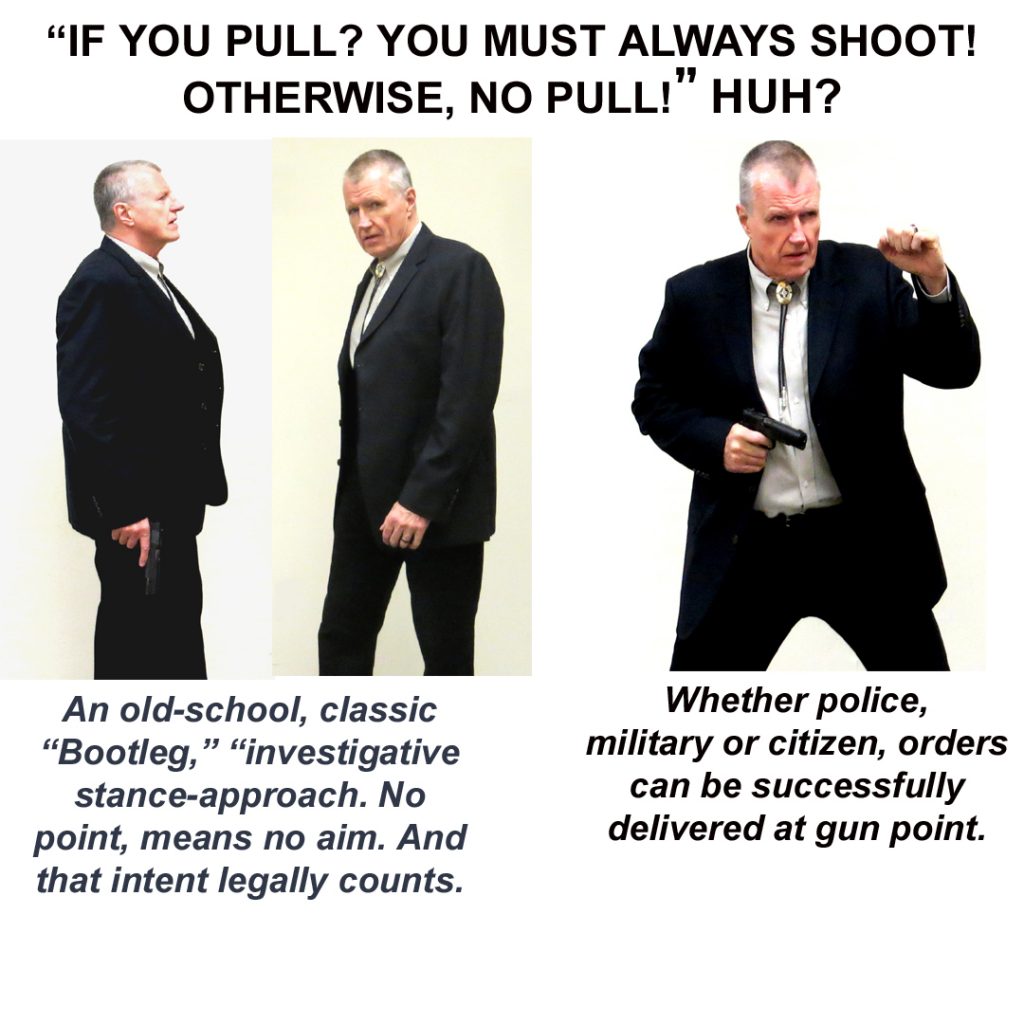
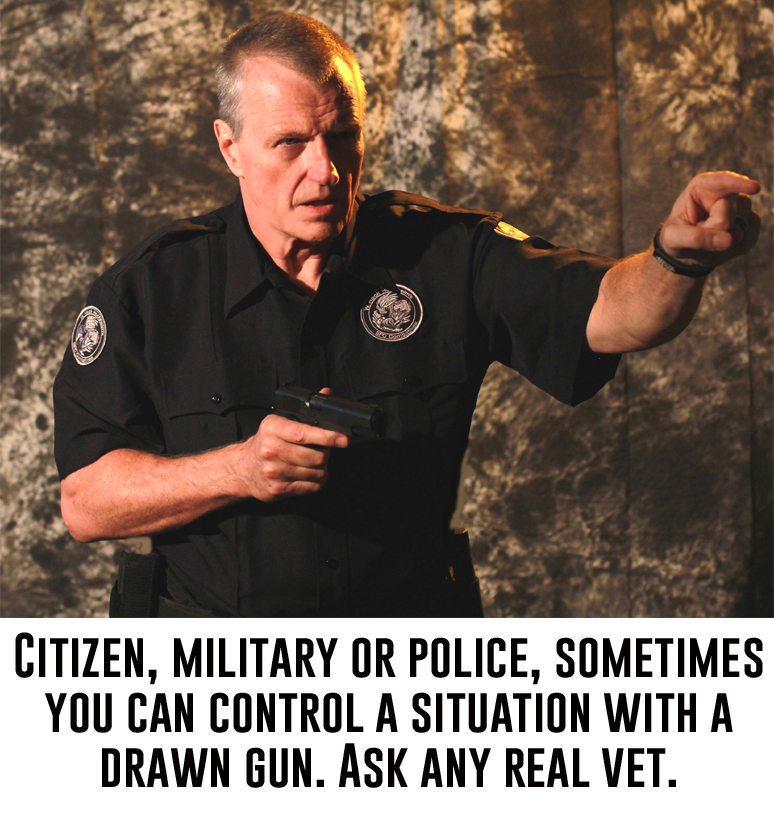
Check out the Training Mission Books, which cover gun combatives. Click right here.
Or…How To, or How NOT To, Maintain a Popular Knife Course
Through time, the who, what, where, when, how and why, my original, once quite popular, Force Necessary: Knife combatives course “fell down,” “fell away” from pop culture. While I still get to teach it around the world, it has slipped way below the pop radar in lieu of other pop programs and my business mistakes. So, when did I take the fall? It happened slowly and then one day you are down looking up.
You see, the “new kids on the block” don’t know that before the fall, I once was “somebody.” In the 1990s I was part of a resurgence, a re-look, a re-examination of older knife material (which essentially was mostly a lot of knife dueling, and much of that based on swords). Things needed evolving. Things needed converging into performance coaching, modern law and rules of engagement.
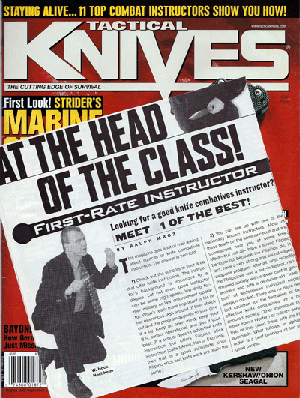
Studying and teaching “knife,” for 30 years comes with its own inherent, stigma problems and limited interest, we all struggle with. The knife world is also very small. So small, one might ask, “Why bother?” Why not just sell Italian shoes? What is this knife world? Who then prioritizes the knife and in what ways? My thoughts –
From a business perspective, these groups are the ones you knife folks need to advertise with. Good luck finding them all. Customer acquisition! As a teacher-practitioner, I am mostly in the above “worriers group,” dismissing anything fancy or artsy. When you worry, you worry about before, during and after the attack. None of this is a hobby for me and I don’t do cartwheels over various looking knifes, no more than I would if I examined hammers or saws. They are just tools. Your knife is nothing but a tool. But, the above 3 groups are the knife world we live in. What were my and other ‘s business mistakes?
Business Problem 1: The Knife Business is a Stigmata. I mean to say that studying knife fighting was and is still not at all popular. It might be a origin mistake to bother trying. A very rare few are “doing” it. Once teaching and learning, I don’t like many terms, images, messages, logos, etc. relating to the negative stigmas surrounding knife fighting, A rebel, thug, skull etc. persona.
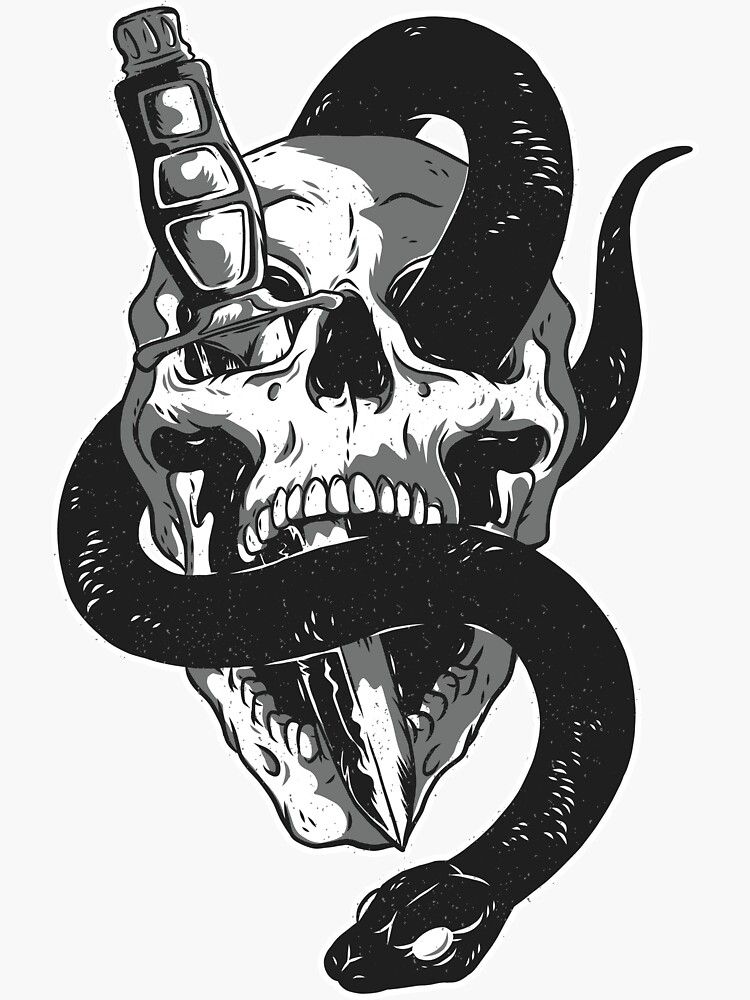
These realities are not too popular for the “new kids” that want to appear a bit rebellious? Learn and-or teach slicing, dicing and gutting people with a knife, void of situations and the law. This marketing can be naïve, reckless and immature, incomplete and a ticking, legal time bomb for you. All the legal prosecution needs to do is show a jury a few of these system names (course names and knife names are so, so important) photographs, logos, teachers and characters and you the associated user, become jailbait. I say stupid, but still they are “money smart,” and more popular and sought after than me. By the grace of God they go…until…they have to use that knife. Mature survival is surviving-enduring before, during and after a violent event. The end game – as in the legal aftermath, is a big part of a well-thought-out, course.
Various ultra-violent, “skully” death messaging should be reserved as a primer mentality for very serious, military, combat groups. THEIR war psychology. Their war prep. Their war world. Not cops and certainly not every day, walk-around citizens. Mimicking them makes you look like a wannabe punk. Look at the lawsuits filed on cops and citizens – go ahead – have a little death-engraved-logo on your gun (or knife) and see what happens when you shoot someone. Have a patch or tattoo of a grim reaper with a knife, or a skull with a knife through it, and see what happens when you have to legally use a knife. We the police, the prosecutors search your history. Take this idiot for example – I read one New York City, very popular, international knife “cartel-liberty” group headline atop a Facebook page:
“I love it when I carve someone’s balls off and put them in his empty eye sockets.”
Shit man, you think you’re Rambo? You probably work in a fucking supermarket. And you think and talk like this? You need to be on watch list. Fantasy jerk-offs like this give us all a bad name. But images and expressions like this, or near like this, this mystique, does attract a certain sick customer, usually young, or young in the brains anyway. (By the way, after my public complaints and comments on this guy, this must have reached the then Colorado headquarters and this sick-moron took that line down.)
Stigmata-wise, many still call knife training, “knife fighting,” but I don’t like that term, even you are still indeed, fighting with a knife.
Business Problem 2: Failing to Emphasize the Knife Enough. I escaped all existing systems by 1997. Just quit. I had-have a dream! I seek to produce the seamless hand, stick, knife and gun fighter, standing through ground. You do what you got to do, with what you got, where you are. So, this halfway means I do not over-emphasize a knife course or any single course. While I was once in the 1990s and 2000s well known in our small world “for the knife,” I am not now, which puts me behind the knife marketeers. I have built four great, competent individual, non-sport, survival courses which I blend. I can clearly debate ANYONE on course doctrine points. Each course stands a lone, but shooting for the big hand, stick, knife and gun fused end-user, final product has cost me in the knife marketing “ground.”
Business Problem 3: Being too Independent. Another business problem for me? No “flags.” I have no crutch system, no flag to fly, like Pekiti, JKD, Brazil-Mania, Krav-mania. Silat. Arnis. Bruce Lee. UFC. No uniforms. No 12 knives on a vest. No tribal brotherhoods. It’s just little ol’ me flapping in the wind about the knife. I can’t attract these extraneous-system-people, capture super search martial arts terms, as some of those attached are obligated to attend. Despite my avoidance, we business-mature know the established advertising fact the “the grass is always greener on the other….” side of the street? Other country? The sewers of Spain. The temples of Thailand. The monasteries of China? The borders of Israel…the…and so on. Me? My mistake is I appear to be just a bland, white boy with some info. I don’t even have any tattoos!
Business Problem 4: Rise of the Replicators. Of course, with all businesses, this 1990s and 2000 knife movement kicked off a new interest and a fair number of new knife courses popped up often by less experienced, less organized people, and in my opinion doing less comprehensive programs. But this business evolution is to be expected. Invent a new “widget?” There’s a knock-off widget. Then knock-offs with an “S.” In the big picture of training and education however, not widgets, this can be a positive thing. Awareness. Curiosity. Growth. Evolution. And then sometimes no growth. Still, the old often helps the new. The “standing on the shoulders” thing.
Some 25-odd years later, in about 2015, on a popular public forum someone asked me what I thought of Johnny Swift’s new, knife, quick-draw article in an internet magazine. Of course, it wasn’t called knife quick draws. It was named something super-spiffy like “Armageddon Instrument Production,” but it’s just knife quick draws. It was declared brand-new, Biblical-worthy advice Swift preached, and published in the new amazing world of web-jargon magazines called like “Organic Micro Evolution of Edged Prophetic Dynasty.” (I really just made that magazine name up, but how far am I off? You remember that recent trend of densely tech-naming courses and articles? Weren’t you impressed, or can you see right through the disgusting, abject pretentiousness? Twenty and 30 year-olds salivated with these techno titles though! But thank goodness that trend has been dissolving. In this case, it’s really just “stress quickdraws.” It’s not “Rapid Production of Edged Antiphon.” or other poorly veiled, douchebaggery.
Anyway as requested, I read Swift’s ground-breaking, testament as featured in “Retrograde, Skill Supremacy, Elite Magazine” and I replied on the public forum –
“Oh, I have to like Swift’s article. It is virtually, word-for-word,
from my 1995, Knife Level 1 quick draw outline.”
“WHAAAAT” said the young world? My review/remark caused a lot of guffaws and a few smart ass remarks, among the 20 and 30 year old readers, most of whom were so submerged in modern “dynasty jargon,” up to their fad-beards in mystique, and lost in the web world. They’d never even heard of us older guys from the 1990s and 2000s. I mean, who am I to comment like this on their latest fad-boy genius? I added that I was not suggesting that Johnny Swift plagiarized my outline, as it might have innocently been co-opted, or the older info has become so, ever so embedded into the “knife world” it was deemed as open knowledge. Or it was invented, like language, in isolation. I get that. Sure. That happens. (That level 1 knife outline is/was free to the public and has been distributed for literally 3 decades now, and my knife book – declared as the best knife book ever – has been for sale since the 2010s.)
One guy was clever enough to say, “Well, sorry I missed you when I was 5 years old.” Ha! I told him that really was a pretty damn, clever, funny retort. It was really. But missed me? Dude, I never left. However, actually, he never knew I was around to begin with. That is part of…the “fall.” I added in that discussion with Mr. Wise-asses that the spread of education was a good thing, and I probably partook in that process. I reminded the “guffawers” that I participated. I said that the old helps the new. As a great gun instructor Dave Spaulding likes to remind us, “It’s not new. It’s just new to you.”
I also frequently read these days, what is considered catchy and new terms, ideas and expressions that I already published and advertised decades ago. For just one example – a newer knife course (populated by death skeletons and skulls and counter-culture) uses the working-man-world word terms of “Journeyman,” “expert,” etc. Tradesman titles, etc I used first in the 1990s.
Contemplating these copycat things, I consider this list:
But anyway, inside a comprehensive knife course should be:
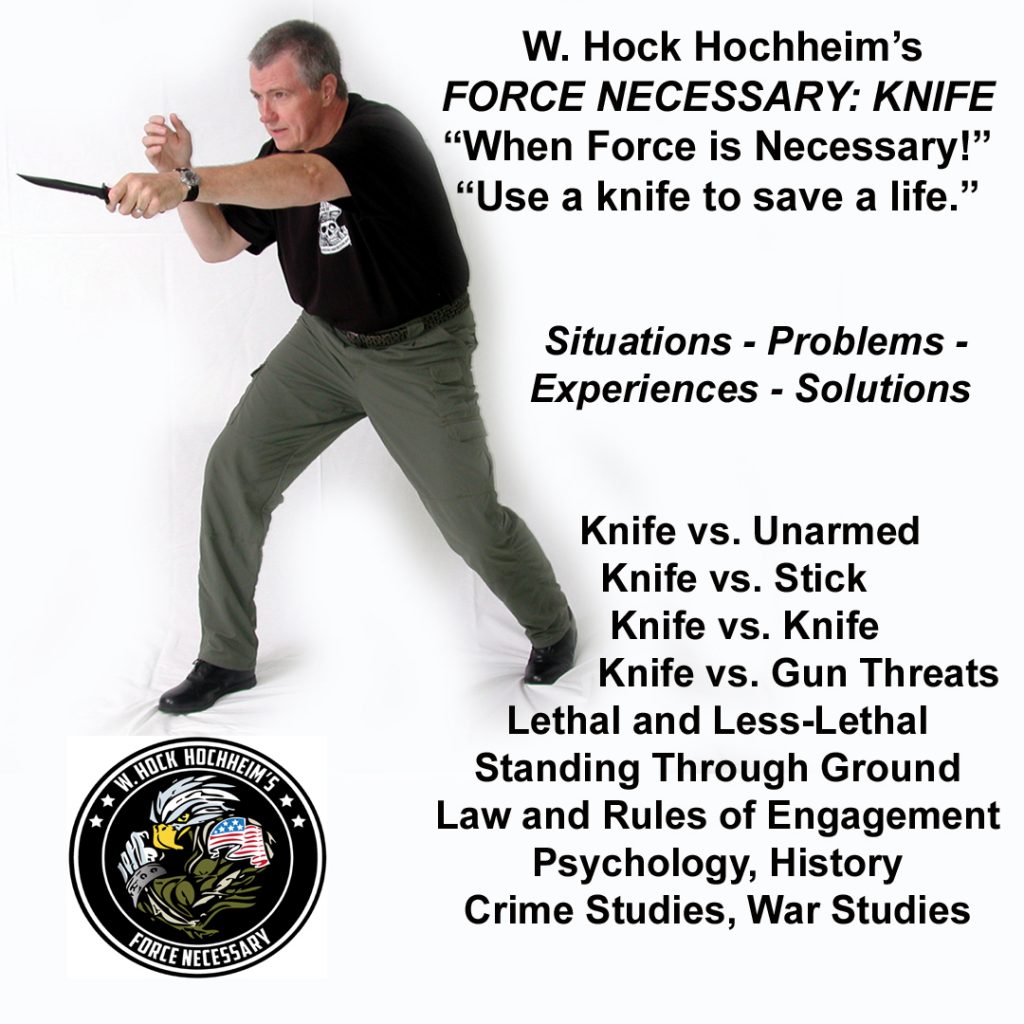
Just a few of us were those innovator pioneers and helped turn some tides in the 1990s and 2000s into what it all has become today, for better or for worse. Maybe you young fellers will learn from my mistakes? Establish new standards? Flesh out topics?
It’s always good to mention and/or thank your prior teachers once in a while. I always do. But, before you young knife guys make any sarcastic jokes about me and the few other 1990s guys again, keep in mind…your modern instructors might have, probably has, “peeked” at all my and our, long established materials. Some will not confess to it. Or, our materials have become such standard, general knife doctrine that these younger guys don’t even know of us. But, guess what? I might just be your long-lost grandfather.
————————————————————-
Hock’s email is Hock@survivalcentrix.com
Get what is still called by so many, the greatest knife book ever, 1000s of how-to photos in the topics above, click right here. (Now in a big second updated edition.)
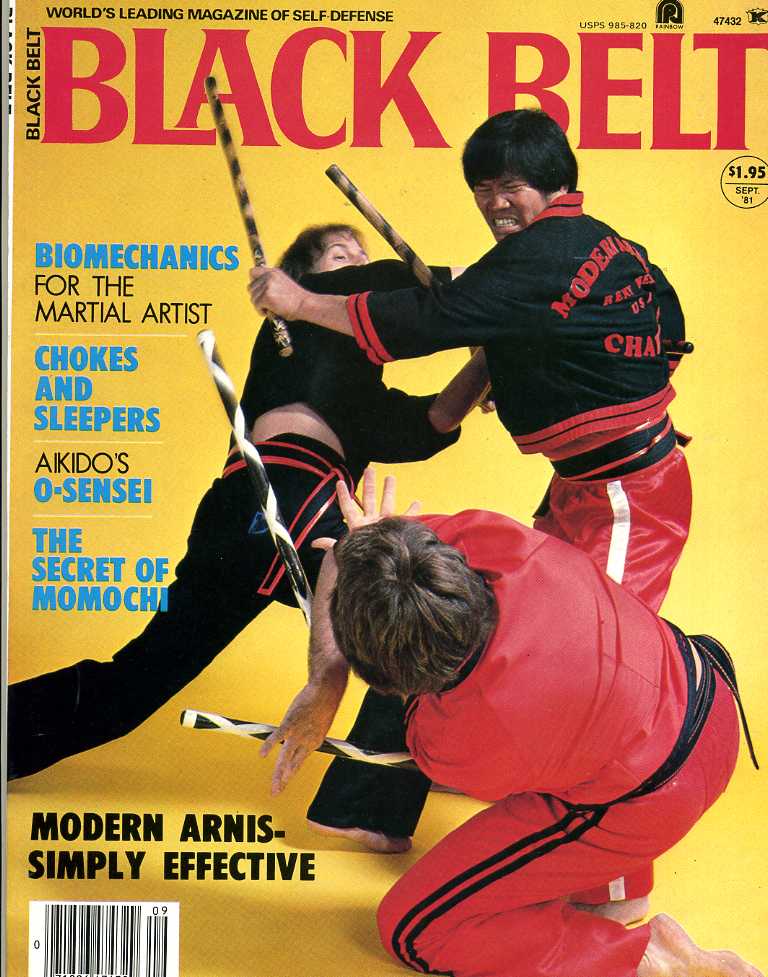
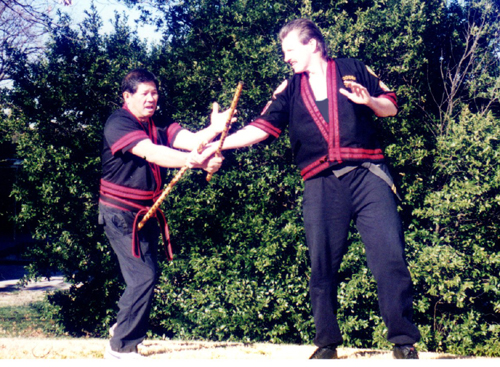
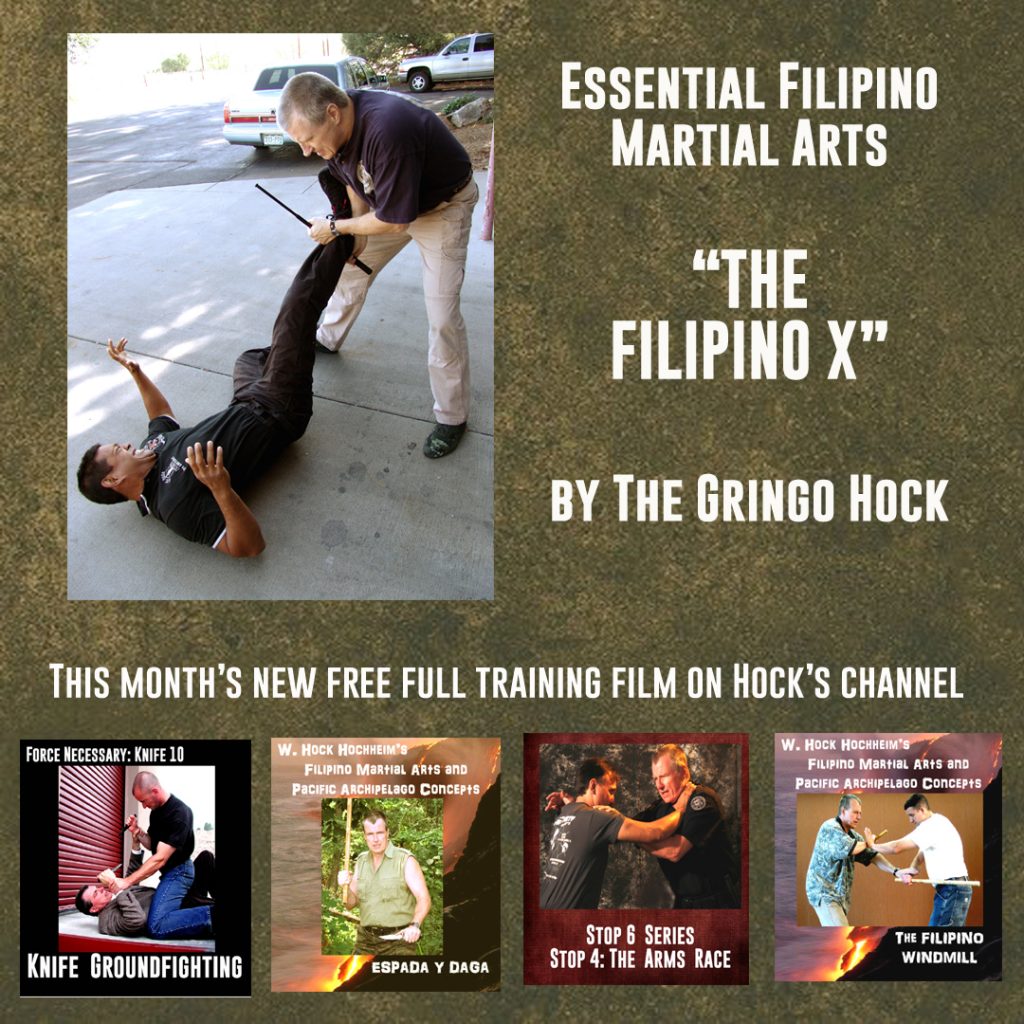
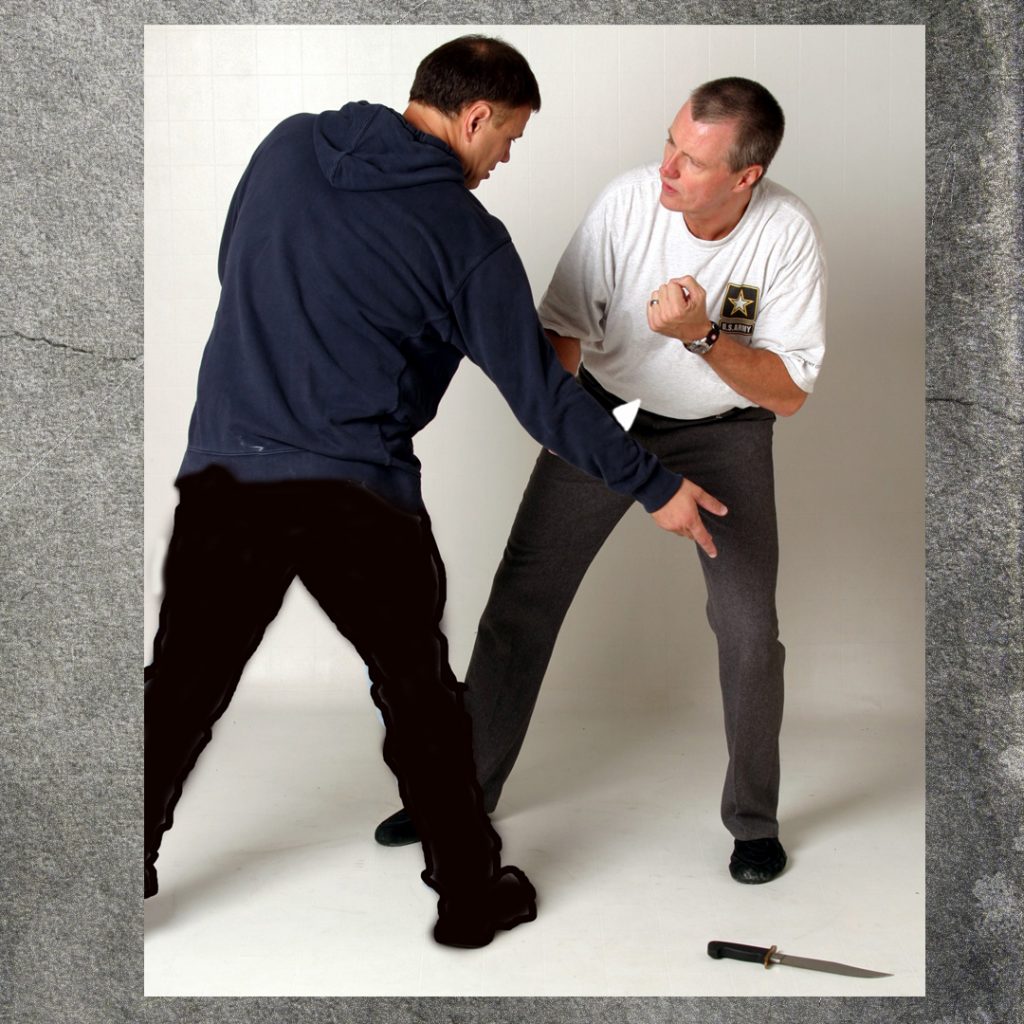
HE DROPS THE KNIFE! WHAT HAPPENS NEXT?
Convergence knife. Converging the law and rules of engagement with knife training. If you achieve a disarm, and the criminal drops the knife, ever wonder what to do next, I mean legally? What might some legal issues be? It could be tricky, depending upon the who, what, where, when, how and why of your situation. You might ask:
-Who Knife?
-What Knife?
-Where Knife?
-When Knife?
-How Knife?
-Why Knife?
* You could write a book about these big and small answers. (Wait a minute. I already have! See below.)
I do want to start off here by either introducing or reminding everyone that knife training in ANY martial art or combatives is usually done situation-free. Just moves and drills. Some duel just for fun and history. Just know were you fit in the big picture. Many fail to include stress knife quickdraws, usually ignored (a whole other problem for many, especially many in FMA where weapons like knives and sticks just magically appear in their hands from the start). Drills and moves are usually empty of reality ramifications.
I usually grimace when I see these video clips of instructors absolutely butchering unarmed opponents or Bob dummies. I know the videos are only slices of life and I can only hope their actual courses have great depth in law, crime and situations. But, I also know that some of them are depthless schools for thugs and future prison inmates who will act reflexively and thoughtlessly as they were taught. Using a knife even in what seems to be a perfect survival, self-defense predicament may still has a terrible stigma with consequences.
Let’s burrow down on only one topic. The disarm of a knife and what happens next. Probably the most useful, practical disarm of a knife is an impact disarm. Much training smartly centers on this common sense category – whacking his weapon bearing limb hard with your knife (or stick, or whatever). He loses the knife!
Now the knife is grounded. Man disarmed. His lethality greatly diminished. You charge in to kill, kill, KILL!??? As taught and seen from macho instructors and slice and dice? Blood and guts? What looks so cool on film can be your ticket to the penitentiary. Are there prosecutors, courts and juries around the world that will prosecute and even persecute you for stabbing and slashing open this suddenly, newly disarmed-unarmed person? Oh, yes there are. In many naive eyes, a dropped knife is no longer a lethal force situation.
One of the big “where” questions is “where did this fight, this disarm happen?” London, England? Berkeley California? Any jurisdiction of liberal dingbats? There, people will say, “but he no longer holds a knife. The lethality is over.” This could become an arrest and expensive troubles for you and maybe a death sentence?
Also the legal system will investigate the name and material in the knife course you take and the name of your knife. Some knife courses are horribly named! And some knives too. How many knives are on you? I did a seminar last weekend and a very “normal guy,” listening to various, over-zealous instructors carries THREE militant-looking, fixed blades everywhere, every day, along with his rigged up pistol. THREE knives? I didn’t do that on task forces serving arrest warrants on wanted felons. He goes to the mailbox like this.
But I like to remind people that the dropped loose knife is just right there on the ground, nearby to some extent on the floor, and all the bad man needs to do is pick it up (in a second of two) and it is a lethal force situation again. Instantly. So, remember that when explaining yourself later. It is still very deadly dangerous. Juries need to hear this possibility. They are just flat out dumb about these things. Plus, and needless to say, this suddenly disarmed man might be a young, giant and still very much an overwhelming threat, even if unarmed.
One solid avenue is learning “less than lethal” applications of knife use. Beyond verbal skills, and getting out of Dodge, and wounding-only, it has been well proven that the mere presentation of a knife (or pistol) versus armed or unarmed attackers have scared the criminal off over half the time, in DOJ studies year after year. But the fact that your system and you are inherently worried about use of force issues may help you in a legal jam.
Situations! Details. Details. Details. Motives. The police. The prosecutors. The court. The jury. Location, location, location, as they say. There is a story, a drama and a trauma with EVERY single act of violence. You have to survive the legal aftermath too.
Find a good, mature, thorough, professional knife system. Find an average, practical knife. Stay the heck out of trouble.
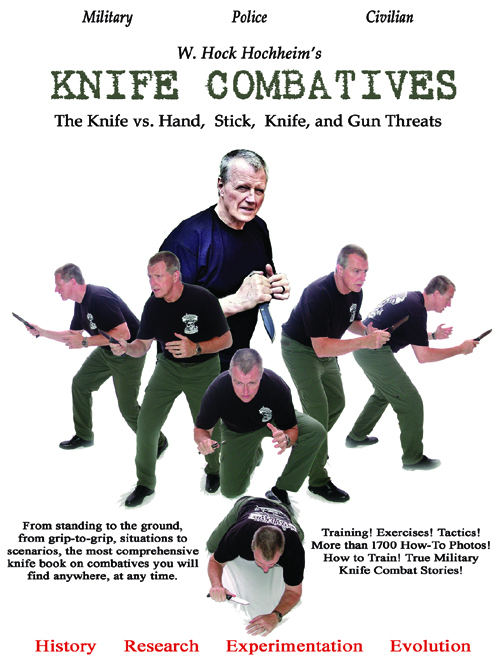
“Sixty-five…fight on the Sambos parking lot,” the police dispatcher announced, as Glen Nowles and I prowled the midnight hour, wintery north Texas streets in our squad car.
“Ten-four,” I replied, and off we went to yet another pain-in-the-neck family argument, or redneck versus hippy, or disco versus cowboy, or, or…you get the picture and the numerous combinations that can happen after clubs-bars hours .
Sambos Restaurant. Odd name, huh? It was a chain like a Denny’s restaurant we see so much today. The names were changed to be more politically correct, but some historians say the name was never a derogatory black theme. It actually came from an abbreviation of the owners Sam Battistone and Newell Bohnett. The photo above is a franchise replica of out city’s Sambos.
The logo was often that an Indian boy, as in India. Open 24 hours, near Interstate 35, it was always a hotspot for the multi-culture drunks after the bars closed. When the country western bars and discos closed, many of the drunk patrons flooded into the all-night and late-night restaurants. And of course, we had our hands full with these knuckleheads. Quite a mix. Roy Rogers at one table. John Travolta or Dennis “Easy Rider” Hopper at another. I’ve had a few knock-down and drag-out fights and arrests in places like this.
When Glenn and I rolled up to Sambos, we did not see any fight in progress, but rather a downed woman and the Sambos manager out front on the wide sidewalk of the restaurant. Shivering from the cold, he waved us over with a motion of desperation. As we ran from the car, he yelled,
“He hit her and she fell. She’s dead! I think she’s dead!”
Probably knocked out when her head hit the pavement? Typical, I first thought. I went to her head and lifted it to see or feel for a wound as Glen grabbed for her throat and felt for a pulse.
“Did you call for an ambulance, too?” he asked the manager.
“No, just the police.”
“Well, call an ambulance,” Glen ordered, and he looked at me. “No pulse. No pulse,” he told me. “She’s dead.”
We began CPR on her. Glenn started working on the mouth and I took the chest, as we were taught. We switched positions, but worked non-stop, for what seemed like an hour, but it wasn’t. Both
Glen and I recognized her as someone we knew, an emergency room nurse at one of our hospitals.
She suddenly gagged! And coughed! What a sign, and her body started to spasm. She even started to mumble.
Glen and I dropped back on the cold ground beside her, pretty well exhausted. She sat up in complete shock, babbling about where she was. I wanted to say “from hell and back” but refrained. Who knows, maybe she went the other way? We all three sat there on the sidewalk. In the distance, we heard the sirens of an ambulance.
“Your heart stopped,” Glen said.
“My God, my God,” she said.
“What happened?” he asked.
“My husband and I…. had a fight. That is all I can remember.”
“He hit her!” the manager piped in. “He hit her, but she fell when he hit her in the chest. Hard in the chest!”
Apparently, it was a heart-stopping strike to the chest. Not all that unusual really. The ambulance pulled up and EMTs charged out with gear. They began checking her out as Glen and I stood up.
Typically, we follow the ambulance to the hospital and get all the complainant’s contact information to fill out a crime report. The next day, detectives would work the assault case, domestic or
otherwise, and that is the typical routine of that age and era.
“Did you see the car the husband left in?” I asked the manager as I stood up, and as the EMT crew readied the woman for transport.
“Left? He didn’t leave,” the manager answered.
“What? Where is he?” I asked.
“Well, he is right there,” and he pointed to the first booth in the corner of the front door. Through the huge glass windows, there sat a man with a menacing expression, smoking a cigarette, facing us with a cup of coffee on the table. He was right at the front window; directly facing us and saw everything we did.
“Him?” Glen asked, about as astonished as I was.
“Him,” the manager replied.
“He sat there and watched us do all this?” I said aloud but to myself mostly.
“Yup,” the manager said. “Sat there the whole time. watching.”
Glen and I exchanged glances. Now, getting someone’s heart to beat again is an emotional experience. It is a ride unlike no other. A ticking time bomb that must be diffused before explosions occur in the head and then in the body. It is a race. Then somehow, if it works, the magic of the universe kicks in. The spark of life. The heart beats yet again. So, to think that the husband sat and watched all this. Death, and life again.
I think I was the first to march toward the door. I was quite young then, and I was ready to destroy this guy with my bare hands. I am sure Glen, a bit older, was ready also. But, as so called, professionals we put the “skids on” that, squeezed the adrenaline before we entered the establishment. I sat at the table across from the guy. Glen stood. The husband barely looked at us. Coffee cup in his hand. he stared out the big window.
He looked like an unshaven, smelly scumbag, an uneducated, middle-aged drunk waste of air, time and space. Of course, that is such a snap judgment on my part, huh? I just wanted to toss that hot coffee right in his face, the cup and all, and smack him out of his seat. Couldn’t. But if he made so much as the wrong move? My dream would come true.
The conversation went, to the best of memory, something short like this:
“Coffee good?” I asked quietly.
“No,” he said.
I nodded.
“Any guess where we’re going?” I said.
“Jail,” he said.
“Coffee’s not much better there either. Maybe worse.” I said.
All that angst, as actor/writer Billy Bob Thornton would call it years later – “angst and shit,” and it came down to a calm, few lines about the coffee. Iconic. Laconic. Ironic.
“Up,” I said. I stood. He stood and Glenn cuffed his hands. Glenn searched him as I watched. We marched him to the squad car. No chance for a fight. I guess he could tell that Glen and I were about a thread away from going rodeo right then and there all over him.
Instead, we booked him into the city jail for aggravated assault and the rest is history in a set of books I ain’t read yet. We went to the next call. The detectives did their thing. The D.A.s office did their thing.
I guess they call us professional when we keep our cool at times like these. Sometimes it ain’t easy, but it got easier as the years rolled along. I grew a callous on my hide that was once three inches thick. But I see that cover peeling away now, that bare unpredictable nerve coming closer to the surface again. I hope I can keep some of both that callous and that nerve.
We continued to see the nurse at work for another year. She got a divorce. With each encounter with her, behind the curtain of our conversations, was some kind of a bond. Funny feeling. She told us she was back in school. She graduated with another medical degree and moved away. So, the nurse got a divorce and moved away. That ex-husband by the way? Turned out he really was an unshaven, smelly scumbag, an uneducated, middle-aged, drunk, waste of air, time and human space. A lot of my snap judgments do turn out. Imagine that.
There was a bit of police history here too. As the years went by Glen, I and others did save a few more lives out on the proverbial “streets.” We weren’t EMTs who did this routinely, but we did once in a while. Oddly, ironically, decades later when our police department became more modernized and larger with the times, a new police chief instituted a medal for lifesaving. The first recipient had rescued a woman from a burning car wreck as I recall, and the young officer deserved some creds for his actions. Sure. This medal with news media, was awarded at a big, department ceremony. Great rounds of applause. Yipee.
But some of us older hands sat quiet and could not help but think of the times we had saved lives in the past years. A quick, accidental exchange of glances in the ceremony between me and other older vets said it all to me,
“Oh well, guess the new kids get medals now.”
Such is life. And death. Imagine trying to reward all those deeds retro-actively anyway. How exactly would you do that? And who among us would walk into an admin office and ask, “Can I have a medal, please?” Not me. Not the other vets either.
The medals are a good idea, though I guess, for the future. Good for morale but also it is a special moment to do such a thing. Real heroes doing real work. But the “across the street at the fire station? The hospitals? People are saving lives all the time. Way, way more than any of us every did.
Hey, even CPR has changed these days, emphasizing more on the chest pumping and way less on the mouth to mouth. Check out the new courses. You never know when you need it.
Check out these police memoirs books from Hock, click here…
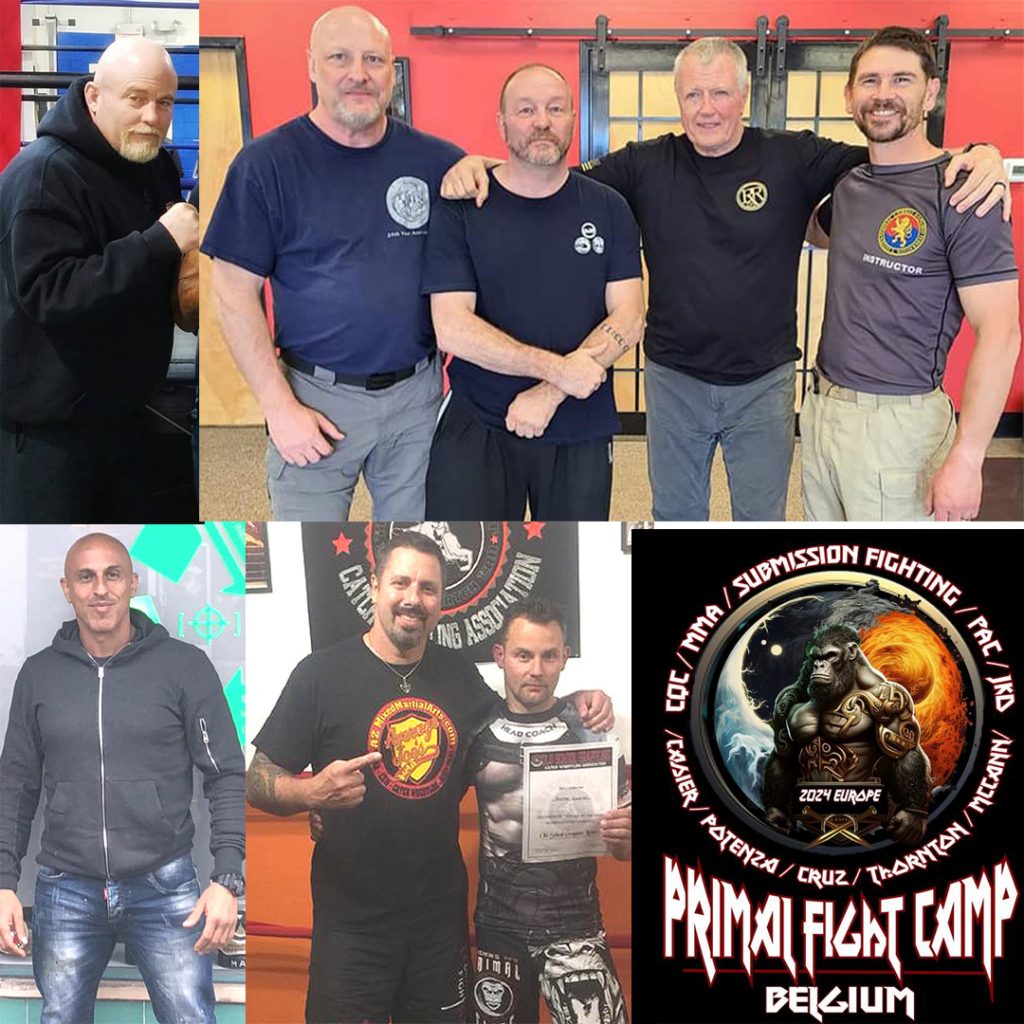
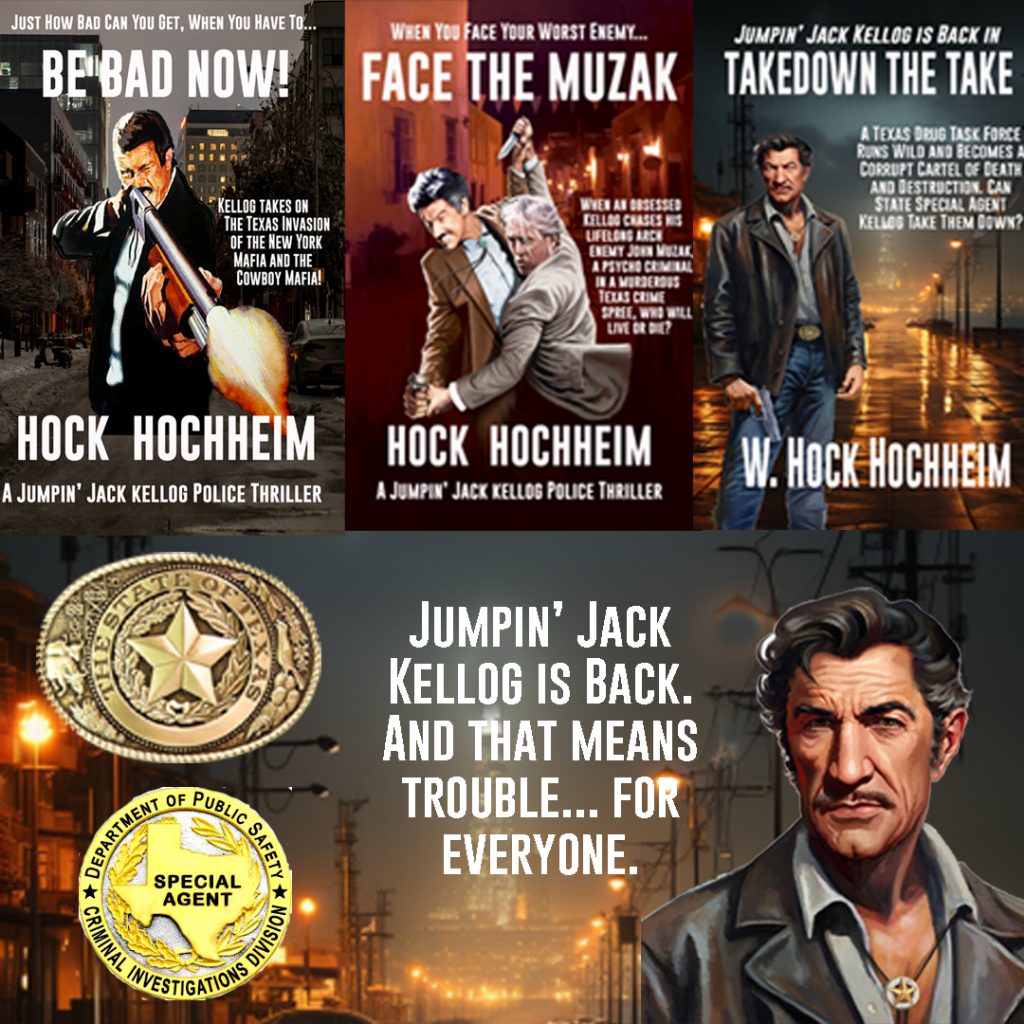
The first murderer I caught in Texas was an interesting case. I think this was the first one there, but it might have been the second. I can’t remember for sure. If you are indeed used to that kind of thing, it was typical of murders in many ways; if you are not and new to it all, it was shocking. But all murders have many intriguing, classical aspects in the timeless, human drama and trauma of life and death.
After years in patrol and an investigator in the US Army, I was no “first rodeo’ guy when I got to Texas. In my first few months on patrol in in Texas in the 1970s, I was riding shotgun with Officer Ron Atkins. About 4 a.m. one night, we got a call from an angry neighbor in what we once called “shack-town,” the projects, or the “poor” part of our city … you get the nickname; you get the very sad picture. The neighbor reported men fighting in the house next door. I later heard the original call on tape: “They’s fightin’ something horrible next door. “They’s young, drinkin’ people, and I don’t know what all is goin’ on over there. They’s yellin.’ They’s screamin’ something horrible. I can’t get a nod of sleep!”
On this street, the walls of those single-story, old, small, wooden houses were very thin; and noise would carry. I reported “10-4” to the dispatcher, and Ron headed that way. As we got close to the block, Ron turned out the headlights to approach the house as quietly as possible. Classic patrol tactics. Then, as now, we boys and girls in blue would get ambushed in route to disturbances with some frequency. Lights out. Never park right in front. All that tactical stuff.
It was pretty chilly as I recall, and it surprised us both to see a nearly naked man alone and busy in motion in front of our target house. He was a tall, thin, black male dressed only in cut-off jeans. We coasted closer and watched him. Ron finally decided we needed to see what was going on; and he pulled on the headlights, high beams, and our takedown lights, powerful light bar beams from our car roof that really turned darkness bright like a movie set.
WELL! This young man was busy working at the trunk of his car. The trunk was open, and he was wrestling with … a lifeless body. The body was as long and lanky as he was; and as quickly as he would shove an arm into the trunk, a leg would roll out and vice versa. The man was covered in swirling blood stains, that is, blood painted in circles and swirls on his skin. In my business, that generally means people were bleeding and fighting.
He froze in the bath of those bright lights. I can still see that picture in my mind today. He was half crouched over, eyes wide. Incredulous and shocked. There was no way he could identify who we were behind our bright lights.
I turned to Ron and said calmly, “I guess we got a murder?”
“Yeah,” Ron, too, said calmly.
I sprang out of the car and pulled my Colt Python .357 magnum and pointed at the man. “Police! Hands up!”
He stood straight up and shoved his hands up high.
Ron and I approached from opposite flanks and handcuffed the man. Ron knew him immediately, “Terry, what is going on?” he asked.
“Ohhhh, MANNN! This mother-fucker tried to kill me.”
Terry was indeed cut by a knife and had multiple slashes. I looked in the open trunk with the help of my Maglite flashlight – the large black male in the trunk was also cut up. He, too, was naked except for cut-off blue jeans. I felt for a pulse. None. It was more than obvious that Terry had put the body in the car planning to dispose of it later. Terry tried a few real Swiss-cheese excuses as Ron walked him back to our squad car and used the hand mike to call for an ambulance, a Sergeant, and for CID. He sat Terry on the ground and started to talk with him and inspect his wounds.
Curious, I walked into the house with my gun up and out. The house was partially furnished and, where so, it was with very old and pitted junk. All made worse, if possible, by the signs of a struggle. The living room was an upturned mess; and where it connected to a dining room, a cheap table and chairs were tossed away and turned upside down. There was an ancient carpet on the floor, and it was covered in a giant bloodstain. And atop this ritual, wet, red site? Two big kitchen knives. I imagined two 6 feet 2 inches lean black guys in matching cut-off jean shorts, no less, ducking, stabbing, and slashing. And yelling loud enough to wake the neighbors.
I saw a dim yellow light on down a short hall; and gun barrel first, I made my way into the room. On an old bed lay a white girl about 20 years old, later I discovered quite drunk, and with long blonde hair. Her shoulders were bare. She clutched a soiled and crusty sheet up to her chin.
“They were fighting over me,” was all she said to me. That pretty much told me a lot.
“Get dressed,” I told her. A duel. A duel for the “fair” lady.
She did, and I guided her out to the front of the house. By now, ambulances and supervisors were arriving. With my arms folded and the two of us leaning against a car on the street, I got a preliminary tale from the girl.
The sad story went that the girl was from out of state and attended one of the two big, local universities we had. She met Terry somehow (as Terry was hardly college material) and began this…this so-called affair. Terry then shared his best friend with her, but the sharing became too tense and complicated. Call it love? Territory? Honor, I guess? Call it what you will. And so, Sir Terry and this Sir Friend had to duel it out with kitchen knives over the fair lady in the dingy little dungeon of the castle. Murder ensued.
In the end, it was another torrid love story in the near-naked city of cut-offs, a mythic melodrama as old as the knights of yore. The duel of edged-weapons, as if told by Shakespeare himself. In the end of the courtroom case months later, the third act you might say, the prosecution could not prove who was defending himself against whom? And Terry Raygins received about a six-year sentence. He was out on the street in two and a half years on parole.
Terry was the first or second murderer I caught in Texas, that I can remember (after 50 years). The very least the first one with Ron Atkins. I got to know Terry as the years went on. He stayed out of major trouble after that. These fair damsels can make you do crazy things.
Post Script: And through the years, I also got to know most all of the Raygins family. All was not well at Raygins’ family castle either. They had a huge family and were a colorful bunch of troublemakers and sad sacks. Poppa Raygins was a hard-working factory man whose feisty wife had tossed him out of the house one winter. Tossed him out … to the garage, that is. Daddy Raygins lived in the unattached, dilapidated garage at the end of the driveway for several years. No heat, no air. We used to drive by and look down the driveway and see ol’ man Raygins watching TV in his garage, or showering in boxer shorts by the yard hose, cooking on a hot plate, and sleeping on an old couch. If he sneaked into the house, his wife would beat him and toss him out. A time or two, I had an occasion to walk up the drive and talk to him, because? Because that is what good patrol officers do. They know the people of their beats.
One day Daddy Raygins decided his hot plate was not enough. He needed an electric stove in his garage. With a stove he could cook better than on the hot plate, and he could also leave the oven door open and heat the place in the winter. He bought a used kitchen stove from RayBlevin’s Used and Repaired Used Appliances. He cleared a space in his cluttered garage, plugged it in, turned it on, touched the metal contraption and electrocuted himself. Fried stone dead. His crispy self lain in the garage a few days until someone eventually saw him, found him and called us. Kilt by a stove he was.
His wife said, “Good riddance to that old bastard.”
Sometimes, life ain’t so pretty in the various Camelots we find for ourselves. Things can get mighty rotten in Denmark. Sometimes.
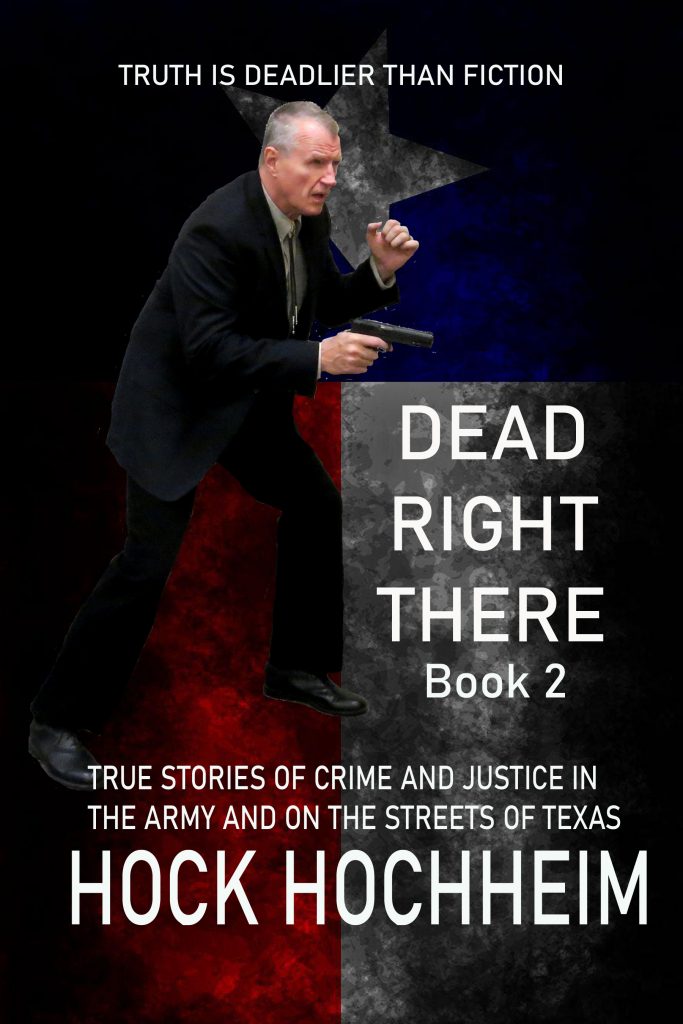
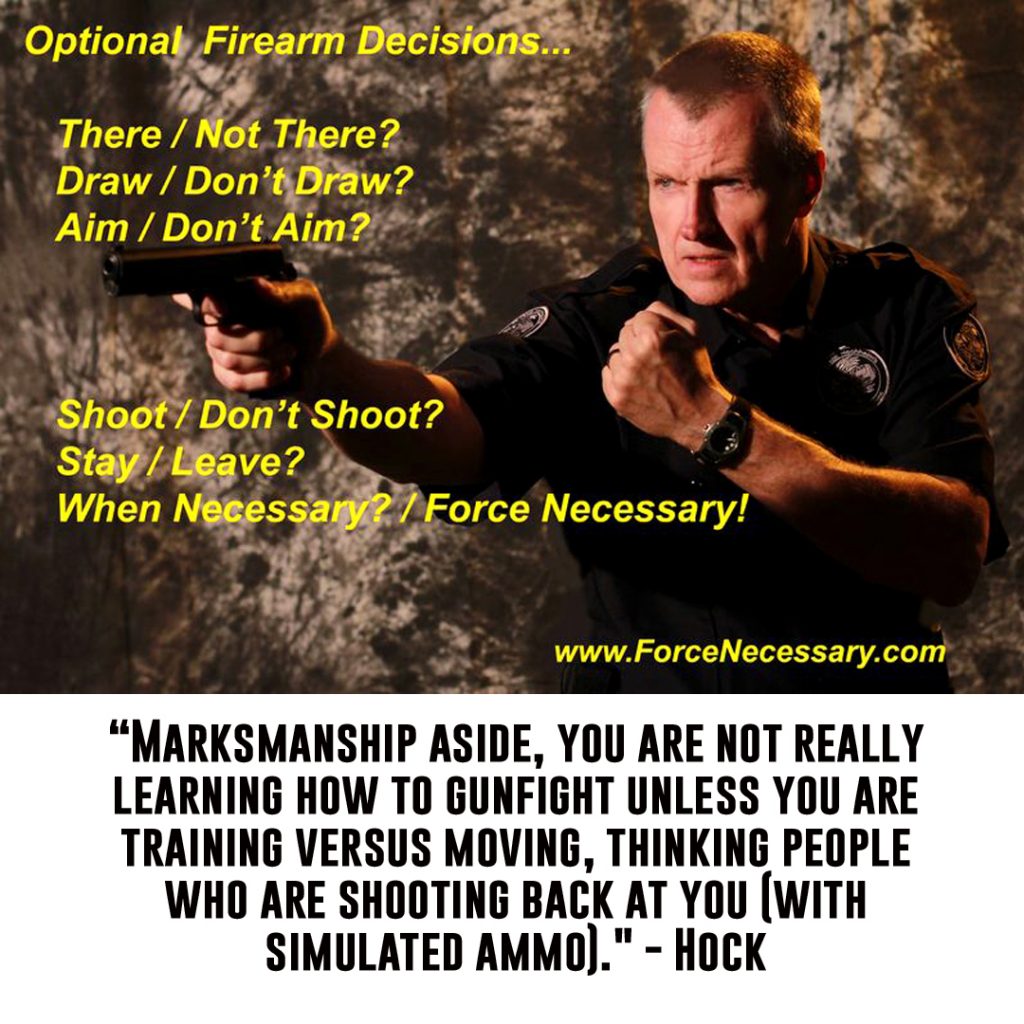
Through the Stop 6, must-be-covered topics are:
* Identify situations.
* Identifying gun carriers.
* Identifying gun carry sites on the body.
* Identify reasons why guns and knives are drawn.
* Identify many physical tip-offs of quick draws.
* Identify your drawn decisions (see photo attached).
* Identify the elbow and-or hand position of common draws.
* use arm-elbow-hand-catch grappling of many draws.
* and more…
The draw process for you and your enemy starts at the carry site, through the draw on up to the presentation, and firing-use. The photo above describes the actual decision steps of a crime or war draw. Some people think it’s just “shoot-don’t shoot.” But life… situations and circumstances define the big picture.
-Sometimes, why are you there? Why can’t, didn’t you leave?
-Sometimes, why actually did you see fit to draw?
-Sometimes, weapon out, but should you lift and aim it?
-Sometimes, shoot-don’t shoot?
-Sometimes, stay or don’t stay? Wait-don’t wait?
All this and way more in my FORCE NECESSARY: GUN (and FN: Knife and FN: Stick course applications) course. My gun course is nothing but sims ammo combat scenarios. No live fire.
“Marksmanship aside, you are not really learning how to gunfight unless you are training versus moving, thinking people who are shooting back at you (with sims).” – Hock
See all the free, full hand, stick, knife, gun and FMA training films click here:
